Study Reveals 40% of Marketers Anticipate Rise in Brand Safety Concerns
PUBLISH DATE: 20 February 2023
Mediaocean, a major multi-channel advertising platform, has recently published its 2022 Market Report and 2023 Forecast report, which highlights the ongoing worries about the safety and appropriateness of media environments.
According to the report, more than half of those surveyed anticipate their brand safety concerns to remain the same in the coming year, while almost 40% expect these worries to rise in 2023. Only a small percentage of respondents expect these concerns to diminish.
Brands have become increasingly worried about brand safety, with 75% of them experiencing a brand safety incident within the last year.
As the concerns about brand safety continue to rise, it raises the question of how brands can address these concerns and ensure brand safety and suitability on platforms such as YouTube, social media, and the Open Web. Let’s find out!
What are the Key Considerations to Ensure Brand Safety?
It is a fundamental aspect of human behavior to make judgments about people based on their company, and the same applies to brands and products. Whether intentionally or subconsciously, consumers evaluate brands based on the content that they associate with. Therefore, brands must safeguard their online image by utilizing sophisticated hyper-contextual targeting solutions.
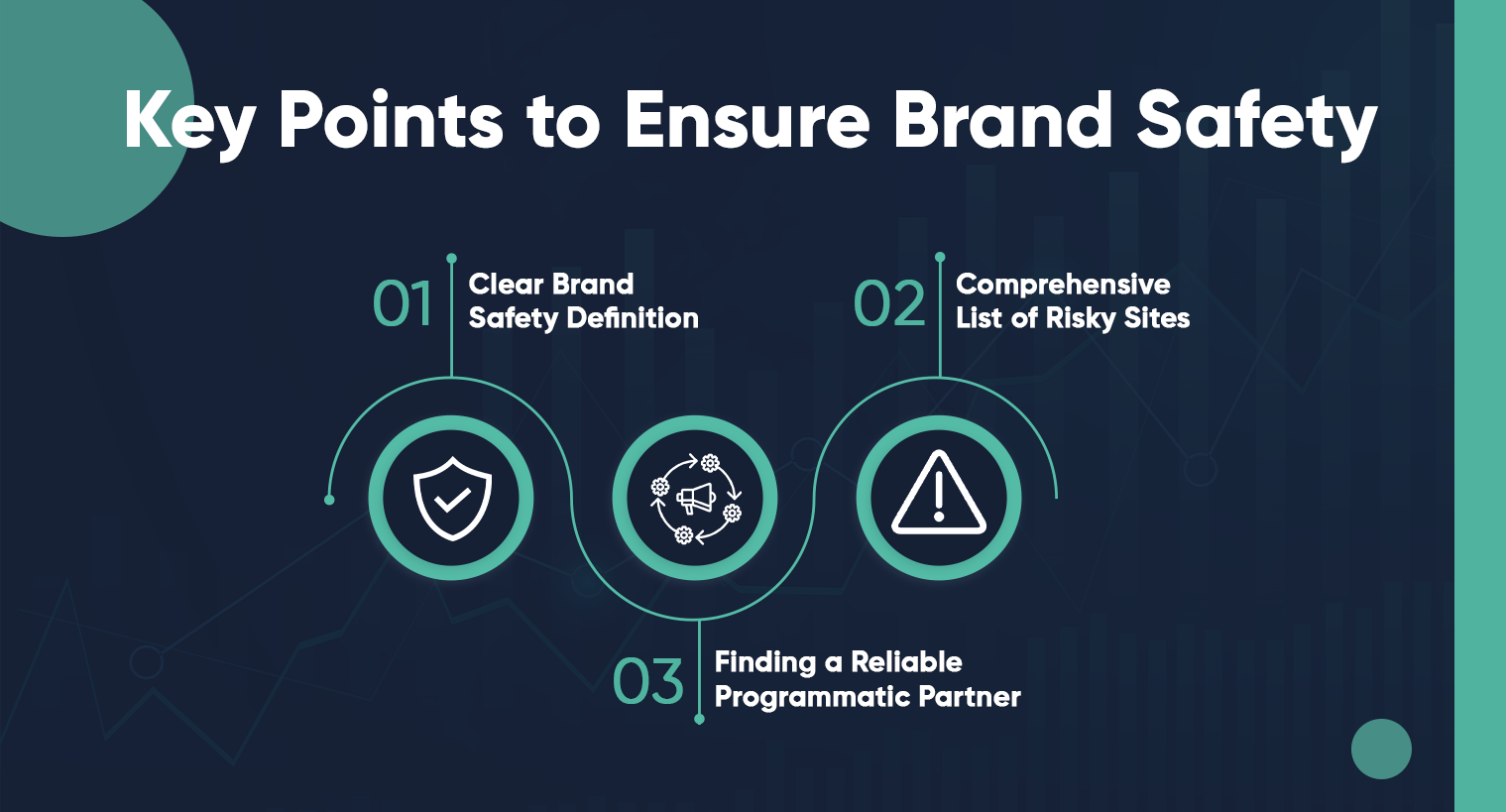
Here are four essential factors that brands should consider to safeguard their image:
1. Develop a Clear Definition of “Brand Safety”
To implement brand-safe advertising, it is crucial to establish a set of guidelines and parameters that everyone within the organization can agree on. It is important to craft a clear definition of what constitutes brand-safe content and what is considered risky or unsafe. Examining industry-standard definitions of brand safety can serve as a good starting point.
2. Create a Comprehensive Blocklist of Sites
A blocklist is a list of websites or content that you do not want your ads to be displayed alongside. It is also referred to as a negative targeting, exclusion list, or blacklist. Maintaining an updated document of blocklisted sites is essential to exclude any undesirable topic, content, or website that may be detrimental to your brand’s image. By doing so, you can ensure that your ads are only displayed on sites that align with your brand’s values and messaging.
3. Choose a Programmatic Partner that Prioritizes Brand Safety
Selecting the right programmatic partner is crucial to ensuring that your brand remains safe online. At Silverpush, our AI-powered contextual solutions are specifically designed to address brands’ concerns about online advertising without sacrificing reach.
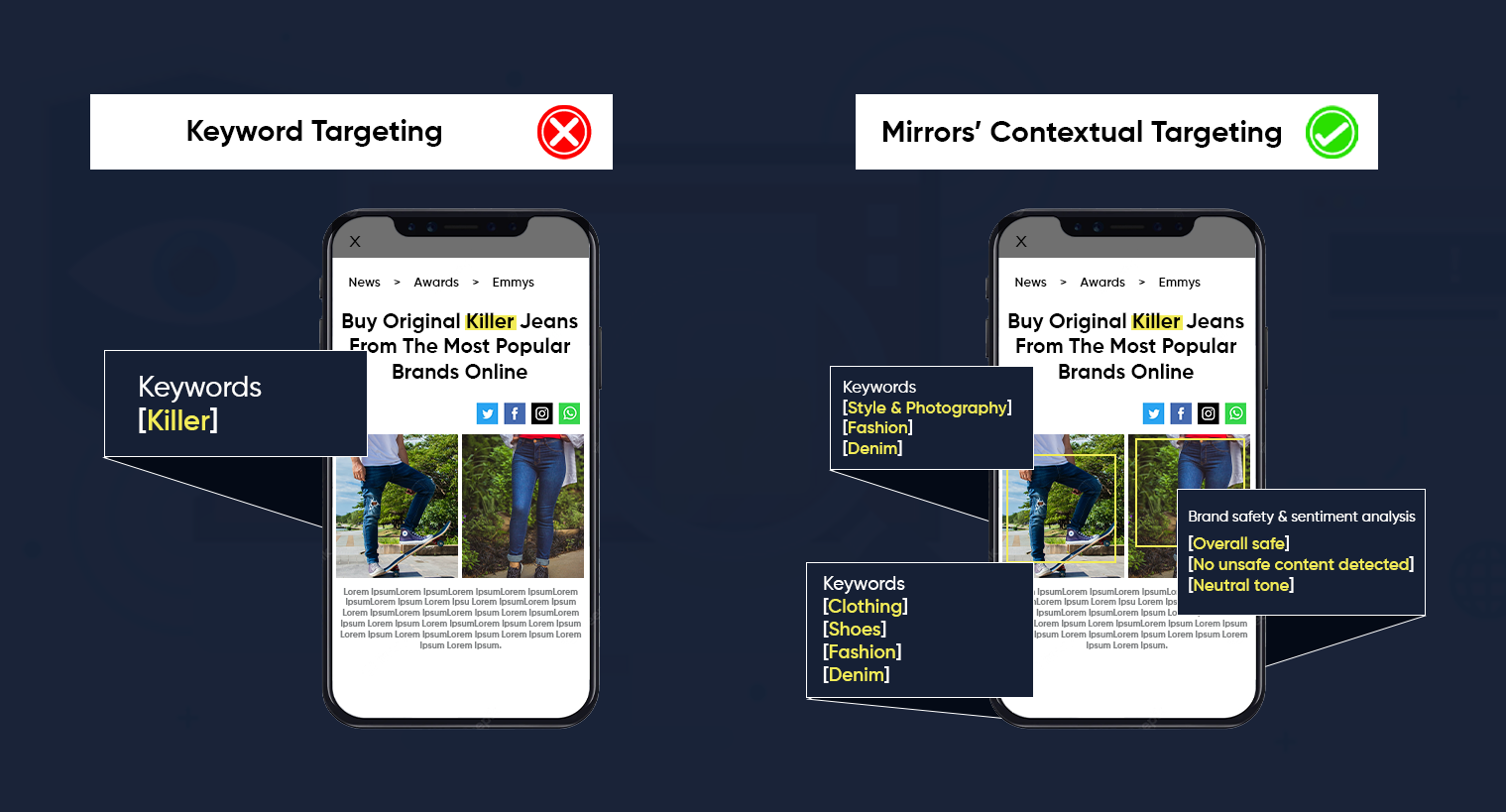
How does our brand safety strategy work?
Mirrors’ deeply trained proprietary AI models identifies custom-defined unsafe contexts like celebrities, actions, objects, and scenarios in a streaming video to contextually filter video content. These videos are classified into many levels of video content, including smoking, adult, violence, wrecks, arms, terrorism, and others. Along with this, it also focuses on brand suitability through text & sentiment analysis, engagement metrics, and organic influence at the video level.
4. Monitor your Campaigns Closely
Digital advertising allows you to track your results in real time, enabling you to identify and address any brand safety concerns promptly. Keep a close eye on your campaigns to identify any potential bot traffic or fraudulent activity. If you spot any issues, make necessary adjustments to your campaign settings to safeguard your brand’s reputation. Monitoring your campaigns is crucial to ensuring that your ads are appearing in safe and suitable environments, which is essential to maintaining a positive brand image.
Why is Brand Safety Important in Advertising?
Brand safety in advertising is critical to maintaining a positive brand image and protecting brand equity. In a recent survey, 90% of consumers stated that they believe brands are responsible for ensuring that their ads appear alongside safe content.
Consumers view the content their favorite brands appear alongside as an implied endorsement of that content. Negative associations can damage a brand’s reputation and have long-term effects on its equity. Therefore, brands need to prioritize brand safety in advertising to ensure that their ads are only displayed in suitable environments that align with their values and messaging.
Here are a few pointers on why brand safety is important in advertising:
1. Establishing a Positive Brand Reputation
Maintaining a good brand reputation is essential for the success and long-term viability of a business. Consumers are more likely to interact with a brand when its ads appear next to legitimate and appropriate content. A study found that 61% of users believe that both the brand and the hosting platform share equal responsibility for keeping content safe. Failure to prioritize brand safety can result in consumers losing trust in the brand and stopping its use.
2. Making a Strong First Impression
For new or smaller brands, a single incident of their ads appearing next to fake news or offensive content can significantly damage their reputation and credibility. Even established brands may suffer losses in ad revenue and potential negative associations when their ads appear next to inappropriate content. Therefore, brands must prioritize brand safety in their advertising efforts and take proactive measures to ensure that their ads only appear next to suitable and reputable content.
Safeguard your Brand Image with Silverpush’s Hyper Contextual Solutions
In today’s digital landscape, brand safety is crucial for maintaining a positive brand image and avoiding potential reputational damage. Silverpush, one of the leading tech companies understands the importance of safeguarding your brand and has developed advanced contextual advertising solutions to help ensure brand safety and drive maximum ROI.
Our AI-powered Mirrors identifies key contexts and filter custom-defined unsafe contexts in streaming video, allowing us to classify videos into different levels of content safety. We also use text and sentiment analysis, engagement metrics, and organic influence to ensure brand suitability.
Partnering with a programmatic partner like Silverpush that prioritizes brand safety can help you maintain your brand’s reputation and build trust with your audience. Contact us today to learn more about how we can help you protect your brand image and achieve your business goals.
The Cookieless Future: How to Thrive in the Life After Cookies?
PUBLISH DATE: 08 February 2023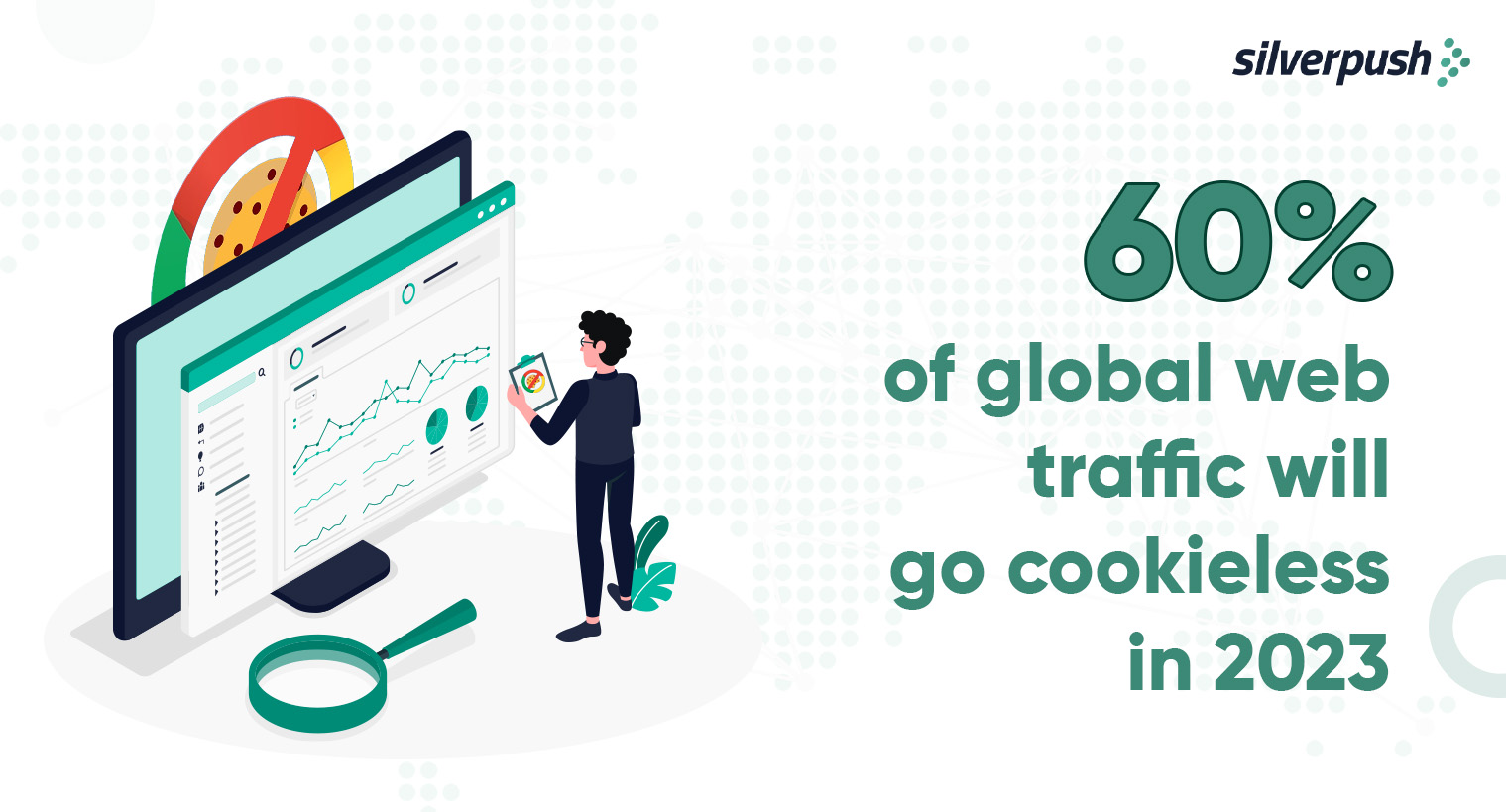
With 60% of global web traffic going cookieless by 2023. Advertisers are still not clear on how to navigate the landscape in the cookieless future. Silverpush’s AI solutions will help fill this gap by providing alternative targeting methods to advertisers & publishers.
Going back to 1992, the year when Netscape made a significant impact in digital history by inventing cookies, allowing websites to save user information and preferences.
This marked a turning point for the digital advertising industry which experienced a revolution as cookies soon became the lifeblood of the online ecosystem. The digital advertising market is currently worth $681.39 billion, and cookies play a major role in its rapid expansion.
As we move forward to 2023, third-party cookies have become a menace for advertisers and publishers who are now looking for alternatives to reach their audience with cookieless advertising solutions.
What Does the Removal of Third-Party Cookies Mean for Advertisers and Publishers?
Today, 86% of US marketers rely on third-party cookies to gain information about user behavior. The impending elimination of third-party cookies presents a major challenge for advertisers to effectively track user behavior and deliver personalized ads.
This change has the potential to negatively impact the digital advertising industry, reducing its efficacy. Publishers will also face difficulties in monetizing their websites, potentially leading to a reduction in the quality of online content as they explore alternative revenue streams like subscriptions or paywalls.
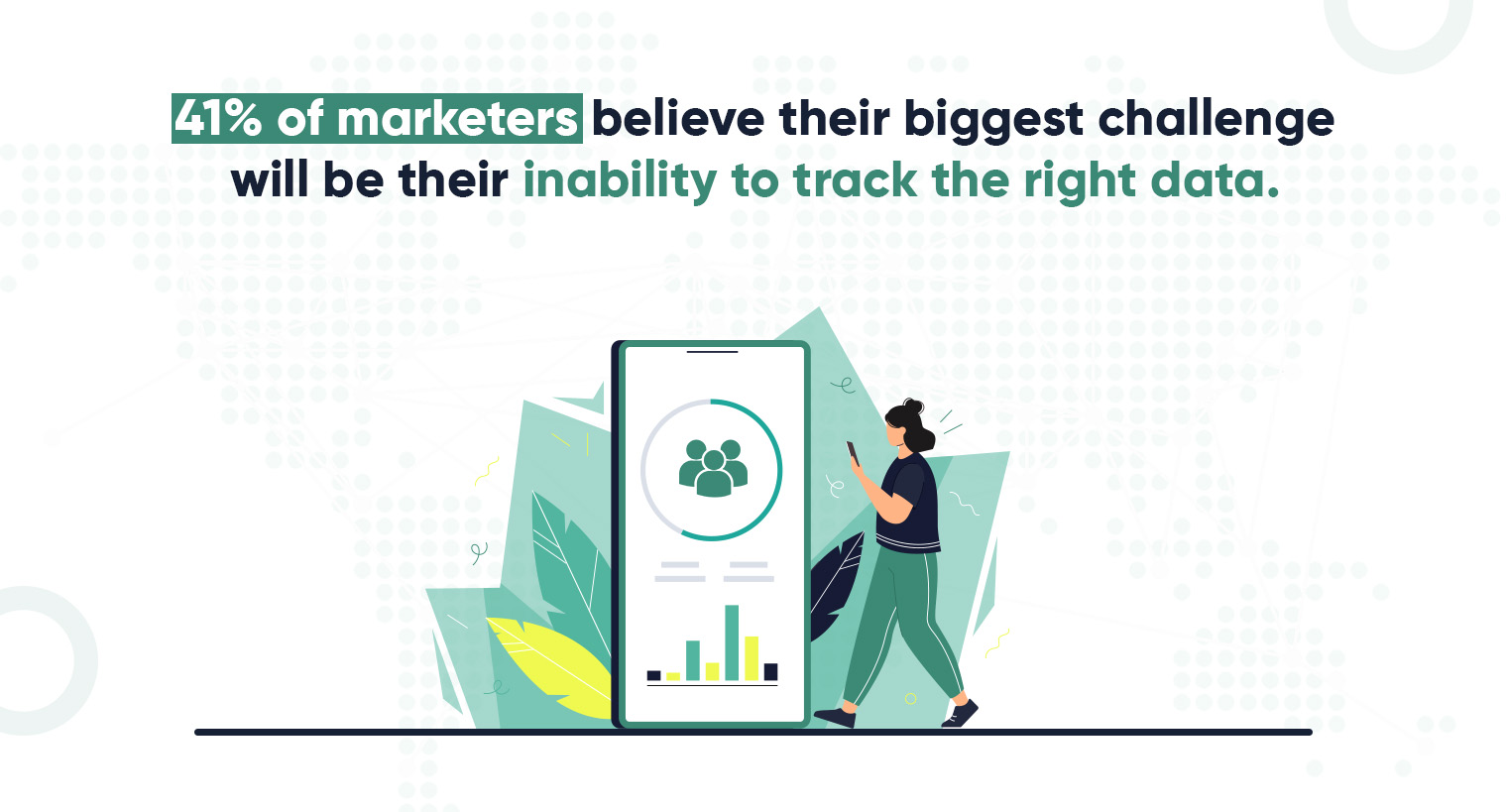
Despite the growing privacy concerns of consumers, personalization remains a priority for them. Marketers must find new solutions to provide personalized experiences without relying solely on third-party cookies to avoid a decrease in ad revenue.
As a marketer, it’s crucial to stay informed and explore new solutions to navigate this shift successfully. This blog will provide answers to your questions on how to adapt to this change.
What Does Cookieless Future Mean?
The cookieless future or cookieless world refers to the ban on third-party cookies. The decision to ban third-party cookies was initiated by Safari and Firefox, and later adopted by Google.
The phase-out of third-party cookies by Google, originally scheduled for 2022, was postponed to 2023 and has now been further delayed to the second half of 2024. Take a look at the timeline of third-party cookie depreciation and how Google has again pushed back its deadline, this time to 2024.
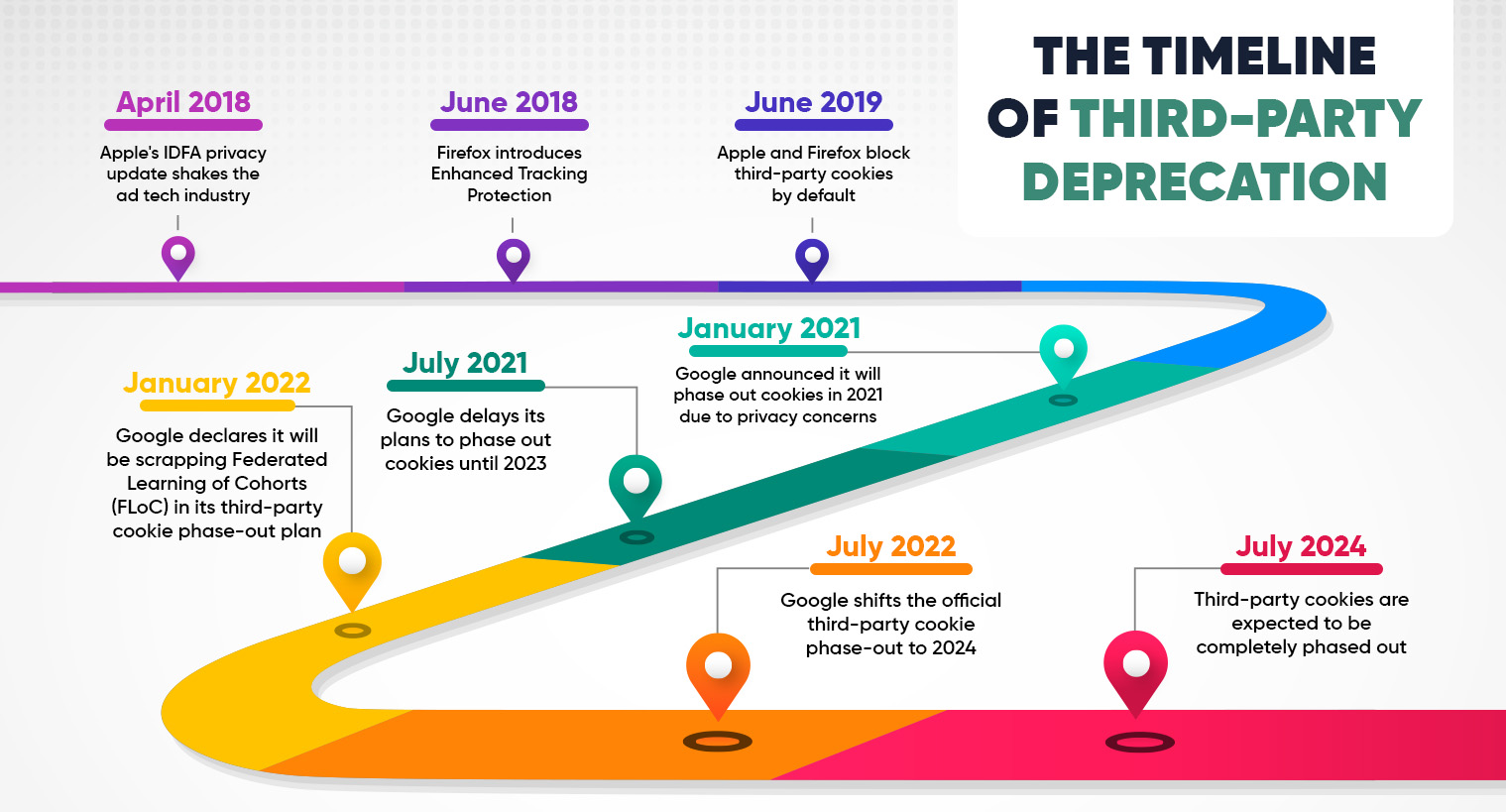
This shift in the digital landscape is driven by privacy concerns and will have a significant impact on advertisers and marketers who rely on cookies to gather information about their target audience.
In the cookieless future, advertisers will need to find third-party cookie alternatives for personalization and targeting, such as through first-party data and the use of privacy-focused advertising methods like contextual advertising.
They should also consider investing in the development of new data sources and technologies and prioritize transparency and user privacy.
To prepare for this change, advertisers and marketers should stay informed about industry developments and new regulations in privacy and data usage.
What Will Happen in a Cookieless World?
An immediate impact of a future without cookies will be seen in the size of third-party audiences, causing a decrease in their viability for media buying.
As a result, marketers will face lower conversion rates and ineffective targeting.
To counteract this impact, marketers must devise innovative audience analysis techniques and utilize alternative marketing methods such as email marketing.
In the wake of phasing out third-party cookies, businesses and marketers need to shift to advertising industry’s next big step – contextual targeting as much as possible.
Contextual targeting strategies could prove crucial to successfully personalize experiences throughout the customer journey while ensuring data security and relevant, targeted advertising opportunities.
Also read: https://www.silverpush.co/news/what-does-life-after-third-party-cookies-look-like/
How Can Marketers Prepare for a Cookieless Future?
As the use of third-party cookies faces imminent extinction, the advertising industry has been actively searching for alternative solutions. Despite the availability of various options, each comes with its own limitations. Here are some of the top substitutes for third-party data to drive your digital marketing efforts:
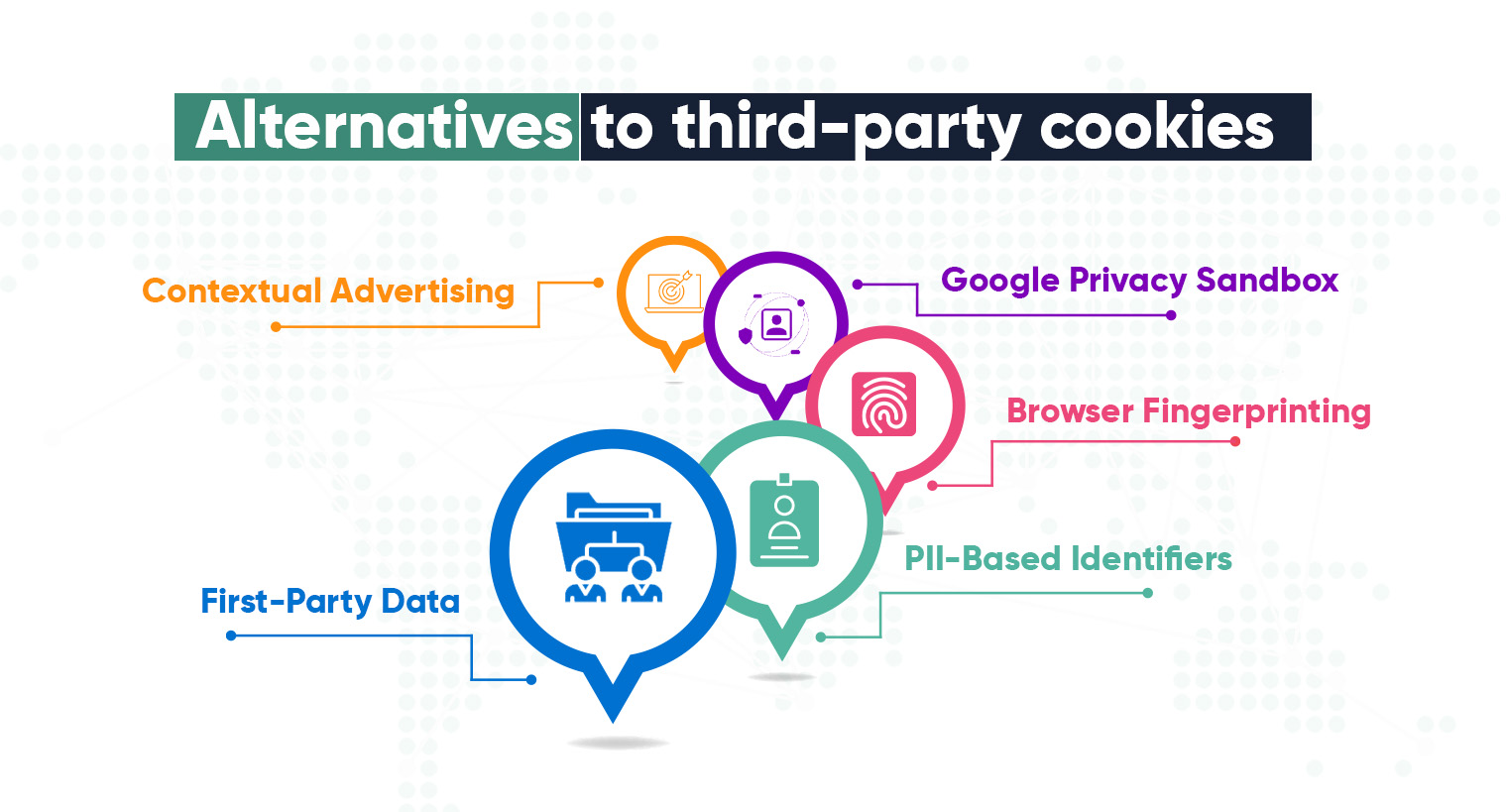
1. First-Party Data
This targeting method also uses cookies, enabling similar targeting capabilities. However, first-party data strategies only track a consumer’s activity within the website that has implemented them.
For instance, if a consumer returns to Pepperfry.com, the site will recall the furniture they previously viewed, but that furniture won’t follow that person to other sites.
This approach allows marketers to target ads to consumers effectively on their own websites without tracking them beyond their platforms. While some customers may appreciate the personalization, collecting first-party data may still feel intrusive to those who are are simply browsing and don’t want to feel followed.
2. PII-Based Identifiers
Using personal identification information such as email addresses or phone numbers, marketers can track users across different devices. This is in contrast to cookies, which do not typically transfer between desktop and mobile. With PII-based identifiers, a site can recognize when a previous user has returned by recognizing an ID generated from a login or other site action. This ID does not link to any personally identifiable information, but instead to the user’s online behavior.
3. Browser Fingerprinting
This technique identifies a device and user by assessing various attributes of a device through the browser. This includes browser type, operating system, active plugins, timezone, language, screen resolution, and settings. While browser fingerprinting can accurately identify the same user across interactions, it is not 100% certain.
4. Google Privacy Sandbox
Google Privacy Sandbox, which is still in its early development stages, aims to provide advertisers with anonymized information through the use of five application programming interfaces (API) in Chrome’s browser instead of cookies. This will limit the amount of information available to marketers while allowing individual users to remain anonymous.
5. Contextual Advertising
Contextual advertising is the only option that does not involve any surveillance. Instead of focusing on consumer identity, contextual advertising displays advertisements next to content that is relevant to the ads.
Which one would you like better? Viewing an ad for sports shoes while reading an article about Jeff Bezos (because a few days back you were scrolling through the internet searching for gym shoes) or, coming across an ad for sports shoes while reading an article on fitness.
Definitely, the latter! Because it is relevant to the content they are currently engaged with.
By targeting interests rather than individuals, contextual advertising is a smart option for advertisers to target consumers in the imminent cookieless future.
Ad tech companies like Silverpush are at the forefront of the shift towards a more privacy-focused and cookie-free future, thanks to advancements in contextual technologies.
Silverpush Will Help You Thrive in Cookieless World
Silverpush saw the flaws of third-party cookies years ago. Since, they’re not people-based, not transparent, and can’t identify people over time and thus never needed it to help its clients reach their relevant audience.
Silverpush, a contextual advertising company has always known that the key to reaching the relevant audience is through contextual targeting.
That’s why we built our AI-Powered solution – Mirrors in 2012. Initially, we offered our in-video contextual advertising solutions only on YouTube. Now we have expanded our technology to OpenWeb, Meta, and CTV.
Mirrors privacy-safe and contextual targeting solutions are a rescuer in the cookieless world. Personalized ads are delivered to the audience with zero dependencies on their data. Most importantly, the placement of ads is done in a completely brand-safe environment with relevance to a particular brand.
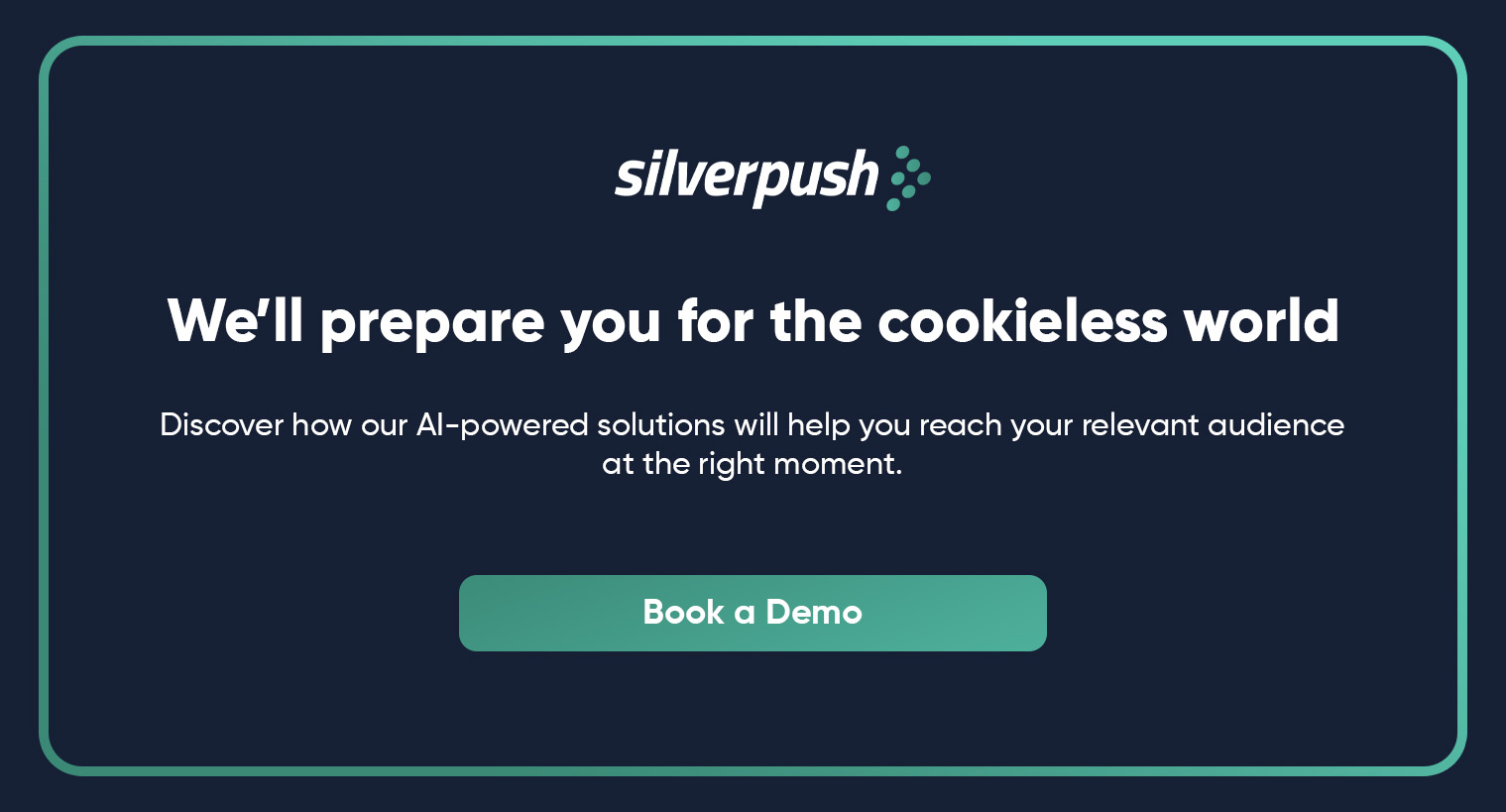
Super Bowl Advertising: A Month-Long, Multi-Screen Event for Brands
PUBLISH DATE: 30 January 2023
For Americans, there are two events that they hyped for a whole year – Football season, and waiting for football season. Football remains highly popular among Americans, with searches for “NFL Draft” and viewership numbers showing an unwavering interest in the sport. According to Google Search data, football is more popular than any other sports league in the US. Despite the challenges faced by the sport this year, the NFL’s popularity continues to rise, with Nielsen data showing a steady increase in viewership over the past decade, outperforming the top 10 network shows.
The upcoming Super Bowl in February is expected to attract a large audience, making it an attractive opportunity for brands to invest in marketing. Historically, brands have focused on airing expensive commercials during the game, but as consumer behaviors change, the window of opportunity for brands has expanded. As a result, more brands are taking advantage of this opportunity to reach a larger audience.
Super Bowl Ad Cost History
The Academy Awards show is the only event that comes close to having the largest TV audience in the US, but the NFL’s Super Bowl remains the largest TV spectacle, both in sports and the country. Despite some decline in certain areas, the Super Bowl is still considered the ultimate advertising platform by brands and attracts many companies to showcase their products and services.
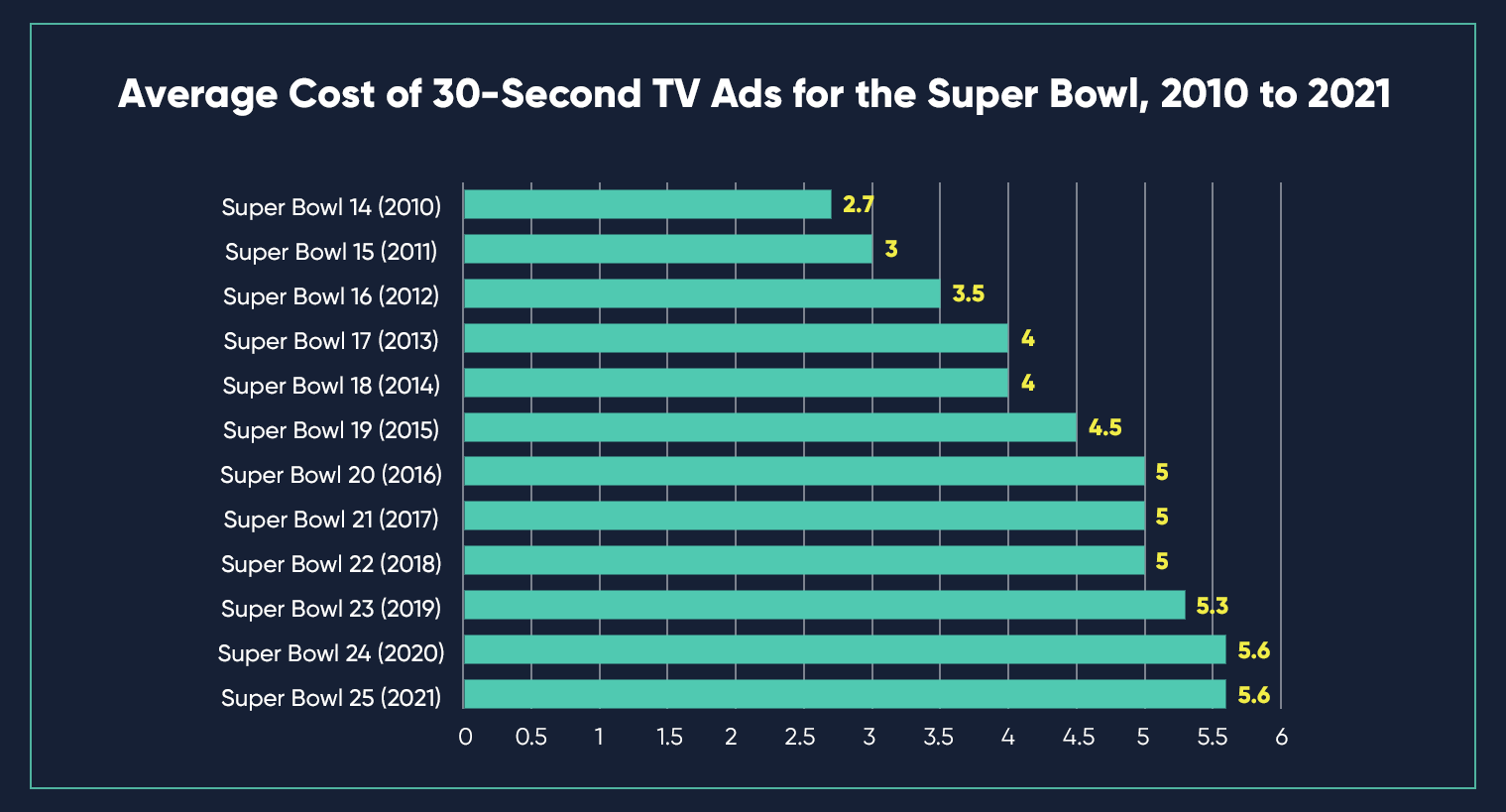
Reaching the Right Audience has Never Been Easier
As the Big Game approaches and signals the end of the NFL season, advertisers are eager to take advantage of one of the year’s largest TV events, attracting over 100 million viewers annually. Despite a decline in overall viewership last year, the game broke the record with 1 billion total streaming minutes, signaling a shift in the way people watch the event. The entire week presents a major opportunity for advertisers to reach a vast audience across all devices, balancing the reach of linear TV with the convenience of streaming.
Focus on the Task Ahead
Advertisers should take advantage of the fact that viewers don’t just watch the game, but spend the whole weekend consuming related content and updates. This includes the pre-game show, city festivities in Los Angeles, team interviews during media week, and more, providing multiple touchpoints for advertisers. With the extended amount of time, advertisers can reach their target market through various streaming channels, including phones and other devices, expanding beyond just TV viewership.
Achieve More with Less
Advertising during the Big Game is costly, with NBC reported to charge up to $6.5 million for a 30-second spot. However, businesses can still reach their target audience at a lower cost through CTV advertising. CTV ads can be targeted based on online behavior, allowing them to reach the intended audience even if they’re not watching the game.
Targeting Relevant Audiences with Geo-Fencing During the Big Game
Advertising during the Big Game offers a unique opportunity to target relevant audiences through geo-fencing. Advertisers can reach users who have taken action to be at locations such as the stadium, team hotels, host city, and other events related to the game. These audiences are highly engaged, and advertisers can retarget them during and after the game, even across all devices in their household. With granular reporting and attribution, brands can track online and offline conversions and see the impact of each individual geofence from the Big Game weekend.
CTV campaigns offer a chance for advertisers to reach relevant audiences with high-impact ad campaigns. During the big week, many advertisers struggle to stand out, but those using a programmatic platform are better equipped for success. The number of people streaming the game is rising, and fans will be using multiple devices, providing advertisers with opportunities to reach their desired audiences. Real-time reporting also provides insights into campaign performance, allowing advertisers to quickly adjust and allocate budgets to higher-performing channels and markets. Every advertiser has a chance to participate in TV’s biggest event.
Complete Guide to Reaching Audience with Cookieless Advertising
PUBLISH DATE: 19 January 2023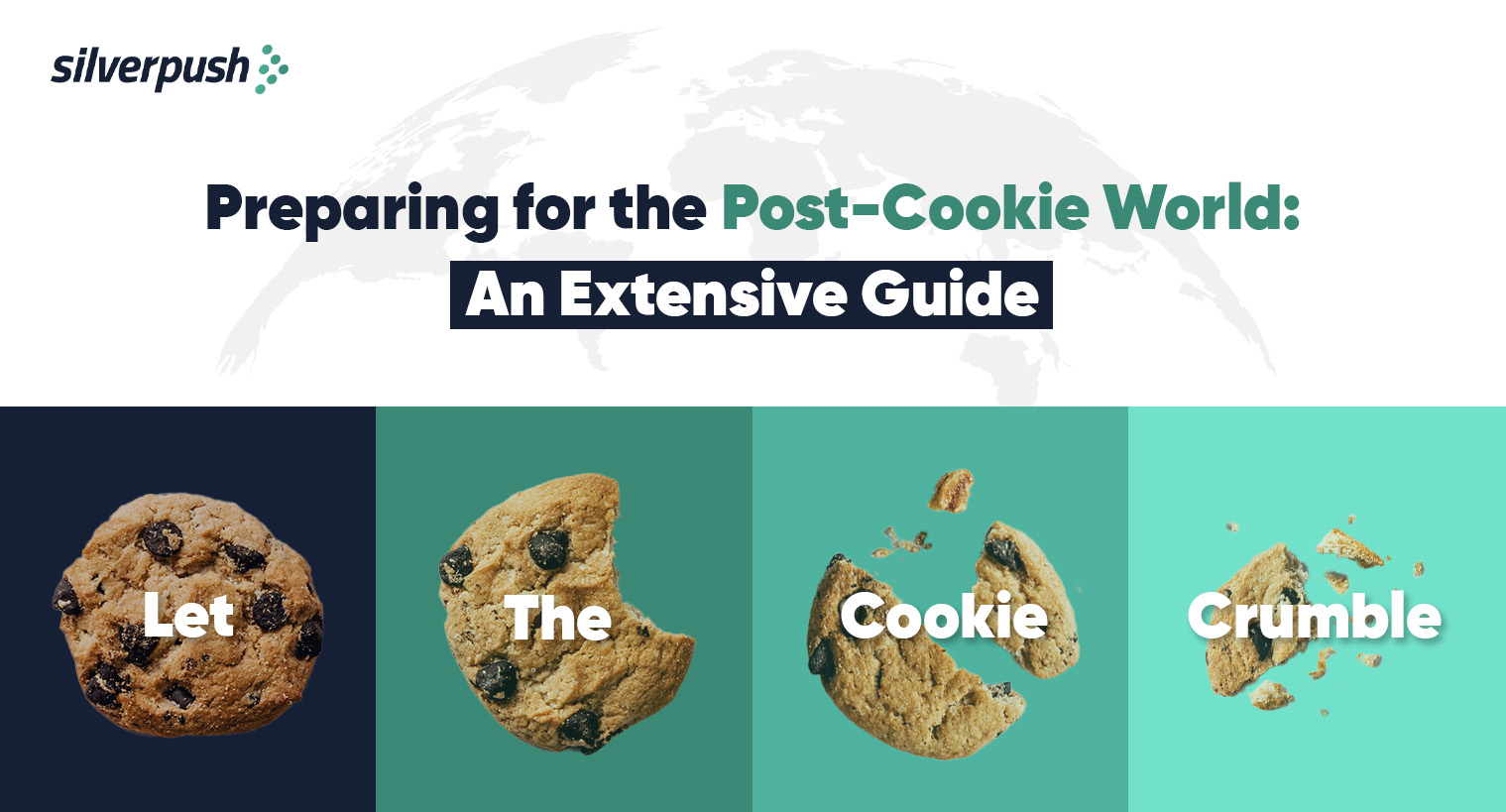
What’s your alternative game plan for effective cookieless advertising? Haven’t thought about it yet? The time is now!
Introduction
The complete year of 2022 was dedicated to cookies! Panic is setting in amongst marketers owing to mounting privacy laws and the ban on cookies, causing them to re-evaluate their strategies.
The year 2023 will be no different! New privacy legislation went into effect on January 1, 2023, in California, Virginia, Colorado, Connecticut, and Utah. It is just a matter of time before further laws are enforced.
Google has announced that it will continue to phase out third-party cookies on Chrome by the end of 2024, ultimately putting an end to two decades of media and data-driven performance-focused advertising.
As the cookieless era looms on the horizon, it’s vital to be proactive in preparing for advertising in a cookieless world. Our comprehensive guide provides in-depth information on how to target your audience without the use of cookies effectively.
In this Guide we’ll Cover:
1. How Does an Ad Get to You?
2. Where do Third-Party Cookies Fit in this Ecosystem?
3. Reasons Behind the Phase-Out of Third-Party Cookies
4. Was the Ban on Third-Party Cookies a Good Decision?
5. What is Cookieless Advertising?
6. Things to Consider While Creating a Cookieless Advertising Strategy
7. What Makes Contextual Targeting an Effective Alternative to Cookieless Advertising?
8. Role of Mirrors’ Contextual Solutions in a Cookieless World?
How Does an Ad Get to You?
Have you ever wondered how an ad actually gets to you when you are:
- Watching a YouTube video
- Reading a news article online
- Playing games on an app
- Browsing through Instagram or Meta
Well, here we bring an end to your curiosity!
In the blink of an eye, the ad space on the page that hosts the platform (you opened) is provided to a network of hundreds of advertising technology companies to see who wants to buy the space at that time on your browser.
After analyzing the context of the page, (if you are reading FIFA-related news) the advertising partner understands from the context of the site that you like football.
Or maybe, it’s Indigo Airlines trying to reach you regarding a flight to Mumbai. They observed your browser searching for flights to Mumbai and shared that information with their advertising partner.
Those advertising partners define min/max bid requirements for their algorithms based on each advertiser’s willingness to pay. Then, depending on the specifications provided by the clients, their algorithms bid directly.
Also Read: Contextual Advertising: The Advertising Industry’s Next Big Step
Where do Third-Party Cookies Fit in this Ecosystem?
Before we go any further, it’s crucial to understand the basics of cookies and how third-party cookies differ from first-party cookies.
What are Cookies?
Cookies are data blocks (sometimes known as little text files) that are generated when a user views and navigates a website. These data blocks retain information in the user’s browser and can recognize the user on future visits.
What is the Use of Cookies?
Cookies enable advertisers to display personalized ads by storing users’ information.
What’s the Difference Between Third-Party and First-Party Cookies?
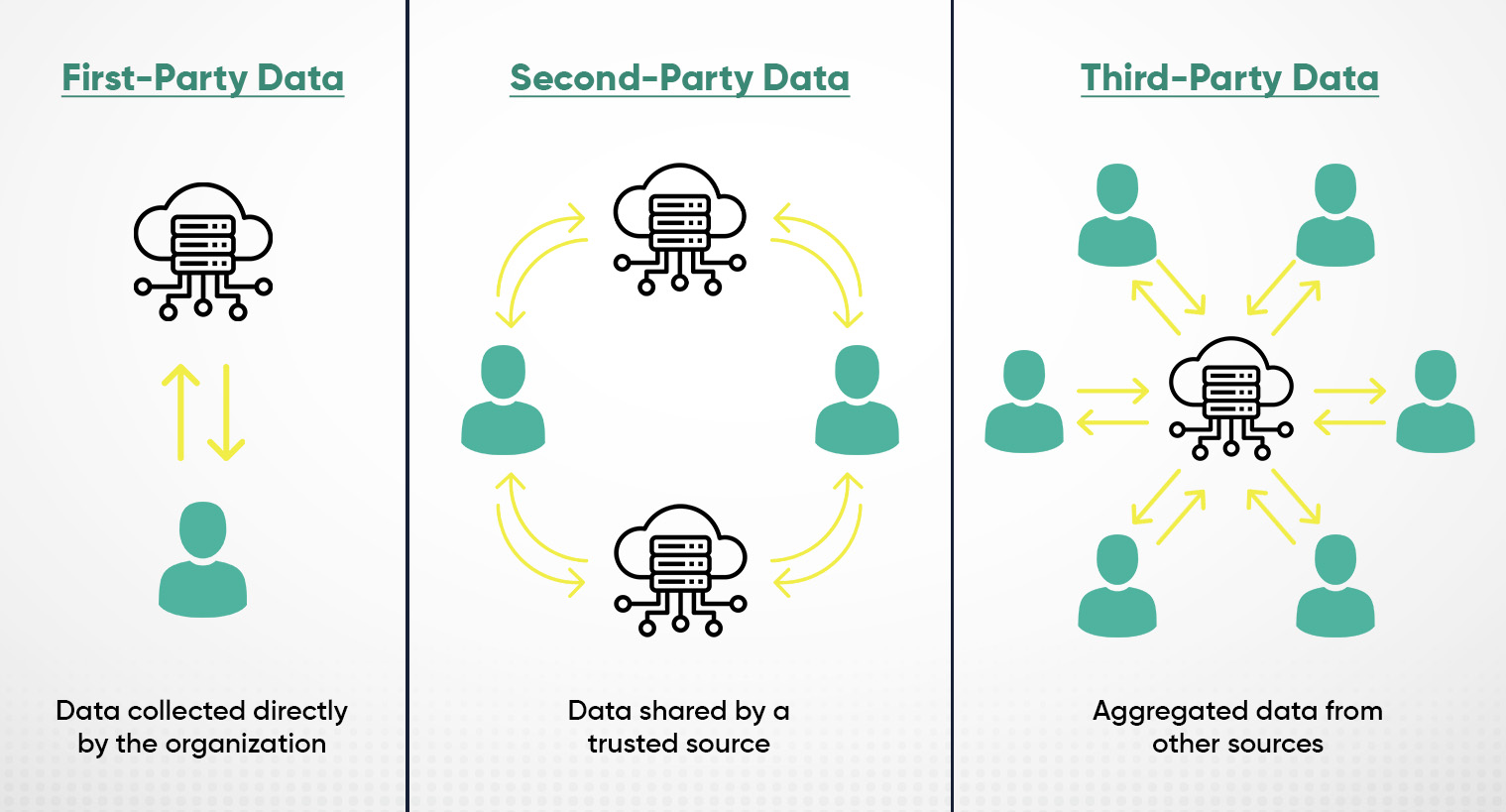
Third-party cookies are set on websites that come from somewhere else. Have you ever looked up a pair of shoes and then seen the same shoes in a few different ad positions on other websites?
This is a prime example of third-party cookies at work. Essentially, third-party cookies are used to track users across multiple sites and target them through ads.
They work in the same way as first-party cookies. They let a firm save a unique ID about the browser, allowing that company to keep track of items you like, have looked at, and so on. When the domain owner “invites” the firm to read or drop a cookie on that browser, this occurs.
First-party cookies, on the other hand, are cookies produced by the host domain and allow a business to enhance the user experience.
For example, first-party cookies store your items in your shopping cart and keep your login information so you don’t have to log in each time you visit a website.
The goal is to assign a unique ID to that browser so that the site owner may track things like:
1. Login Status
To make the site easier to use. Eg. Facebook keeps users signed in for up to 90 days.
2. Past Interests
Newspapers frequently alter sites to highlight essential information for certain users (for example, YouTube also puts music videos on top for me).
3. Purchase Histories
Indigo Airlines may keep track of the fact that you have been browsing for pricing on tickets to Mumbai and have Delhi as the destination filled in for you when you return in an effort to identify the sort of things you enjoy. These are all instances of data associated with first-party cookies, or cookies set directly by the site owner.
Reasons Behind Phase-Out of Third-Party Cookies
Privacy, please? This sentence has been repeated by users for a long time now.
According to data, 66% of consumers said that they were uncomfortable with businesses and brands tracking their browsing history to show them personalized ads.
Originally, third-party cookies were designed to store information under the control of end users anonymously. However, ad tech firms misused the opportunity to collect and link datasets for personalized targeting, leaving consumers worried about their privacy.
Brands use cookies to monitor website visitors, improve user experience, and gather data that allows brands to deliver ads to relevant audiences.
It’s also utilized to find what visitors look at while not on the brand’s websites.
Users will not compromise their privacy as we enter the next era of internet advertising. Their need for privacy and transparency into how their data is gathered and utilized has grown tremendously.
As a result, several major online browsers, including Mozilla Firefox and Safari, have already prohibited third-party cookies and Google will soon join them in this quest. Google has recently announced its Chrome’s Privacy Sandbox proposal.

Google has stated that it would not restrict third-party cookies on its browsers until the second half of 2024. This follows a few delays, mostly because Google wanted advertisers to have more time to change their advertising strategy and test new, less invasive targeted advertising technology.
“We do not believe these solutions will match expanding consumer privacy expectations, nor can they withstand fast shifting legislative limits, and hence are not a long-term investment. Our online products will instead be enabled by privacy-preserving APIs that prohibit individual monitoring while still delivering results to advertisers and publishers”, Google states.
Was the Ban on Third-Party Cookies a Good Decision?
Was the idea behind banning third-party cookies correct? Read the list of pros and cons and decide for yourself.
Pros
1. Google described the termination of third-party cookies as a vital step toward more privacy for online browsers, and it follows Apple’s April 2021 iOS update 14.5, which included a new permission mechanism dubbed App Tracking Transparency (ATT).
2. The phasing out of third-party cookies has shown how much of a publisher’s inventory is under-monetized. For example, cookieless income accounts for around 50% of a publisher’s revenue, yet many do not capitalize on it.
Cons
1. Processes for ad targeting, buying, and optimization will be disrupted and hampered, particularly for performance-based campaigns and specialized audiences.
2. As cookie data gaps weaken attribution and optimization, incrementality testing, and app-to-web tracking, current ad measurement, attribution, and optimization approaches will become peripheral or useless.
3. The phase-out has caught many advertisers, publishers, and marketers off guard. When the phase-out is formally implemented, a lack of planning might result in significant monetization concerns.
What is Cookieless Advertising?
Cookieless advertising indicates that marketers are relying less on third-party cookies. Cookieless does not imply completely cookieless. Cookies can still be tracked by digital marketing businesses in Singapore and web browsers like Google and Safari, but only with the user’s permission. As a result, the user has control over the privacy of their online data.
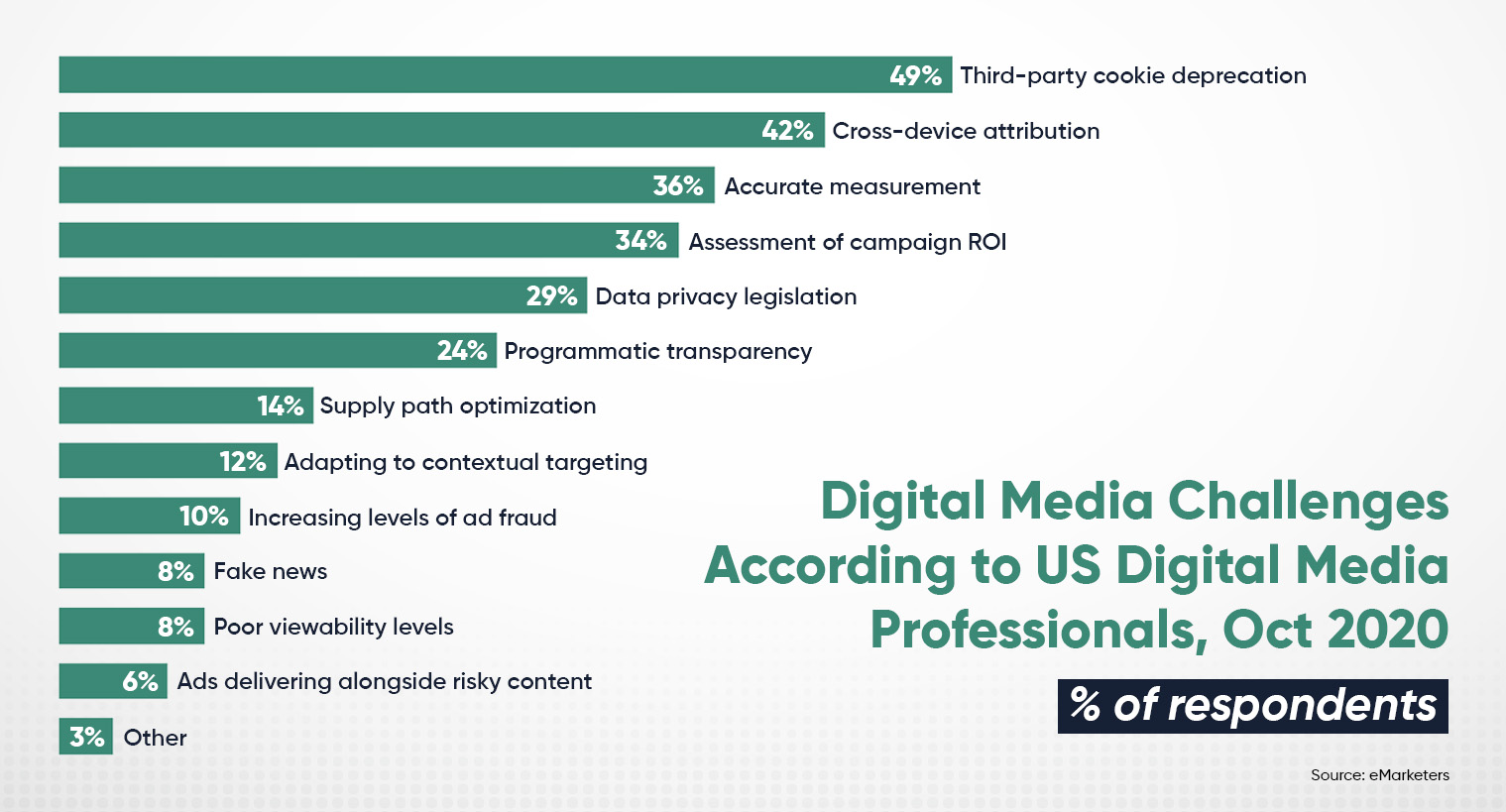
Things to Consider While Creating a Cookieless Advertising Strategy
Even if 2024 seems like a long time away, the race is on to develop viable replacements for third-party cookies. Following are some of the points that need to be kept in mind while creating a cookieless ads plan.
1. Plan your First-Party Data Strategy: If you haven’t already done so, begin inventorying and understanding where all of your first-party data resides across your organization so you can both understand gaps and assess which types of technology solutions can help you store, manage, analyze, and activate that data.
2. Plan for Greater Data Collection: Even in a cookie-free advertising future, you will need to acquire more information about your customers and prospects. Explain that when customers agree to share their data, it results in more relevant advertising and communication. You may experiment with new and intriguing data collection methods, such as quizzes, polls, QR codes, and newsletters.
3. Identify the Right Data Partnerships: You may complement your first-party data with partners that have both standard and unique data sets that you can utilize to improve your cookieless targeting. Location, weather, and buying purpose are examples of these.
4. Tailor your Targeting Strategy: By knowing the appropriate cookieless targeting criteria for the people you want to reach, you may better determine which categories to pursue and which to avoid based on safety, appropriateness, and emotion.
5. Tap into the Right Technology: There are solutions that can assist you in accessing pre-bid contextual categories to locate the best inventory to target and then activate across channels in your preferred DSP. The best is to utilize a technology that focuses on semantic comprehension, brand safety, and page quality to discover the ideal match for your ad. Know how Silverpush can help!
What Makes Contextual Targeting the Best Option to Advertise Without Cookieless?
Contextual targeting is fast becoming a future-proof, brand-safe, and successful cookieless targeting option. According to data, the global contextual advertising market is predicted to reach $376.2 Billion by 2027. Companies all across the world are redirecting their marketing resources toward developing a strong contextual strategy, as you can see from the image below.
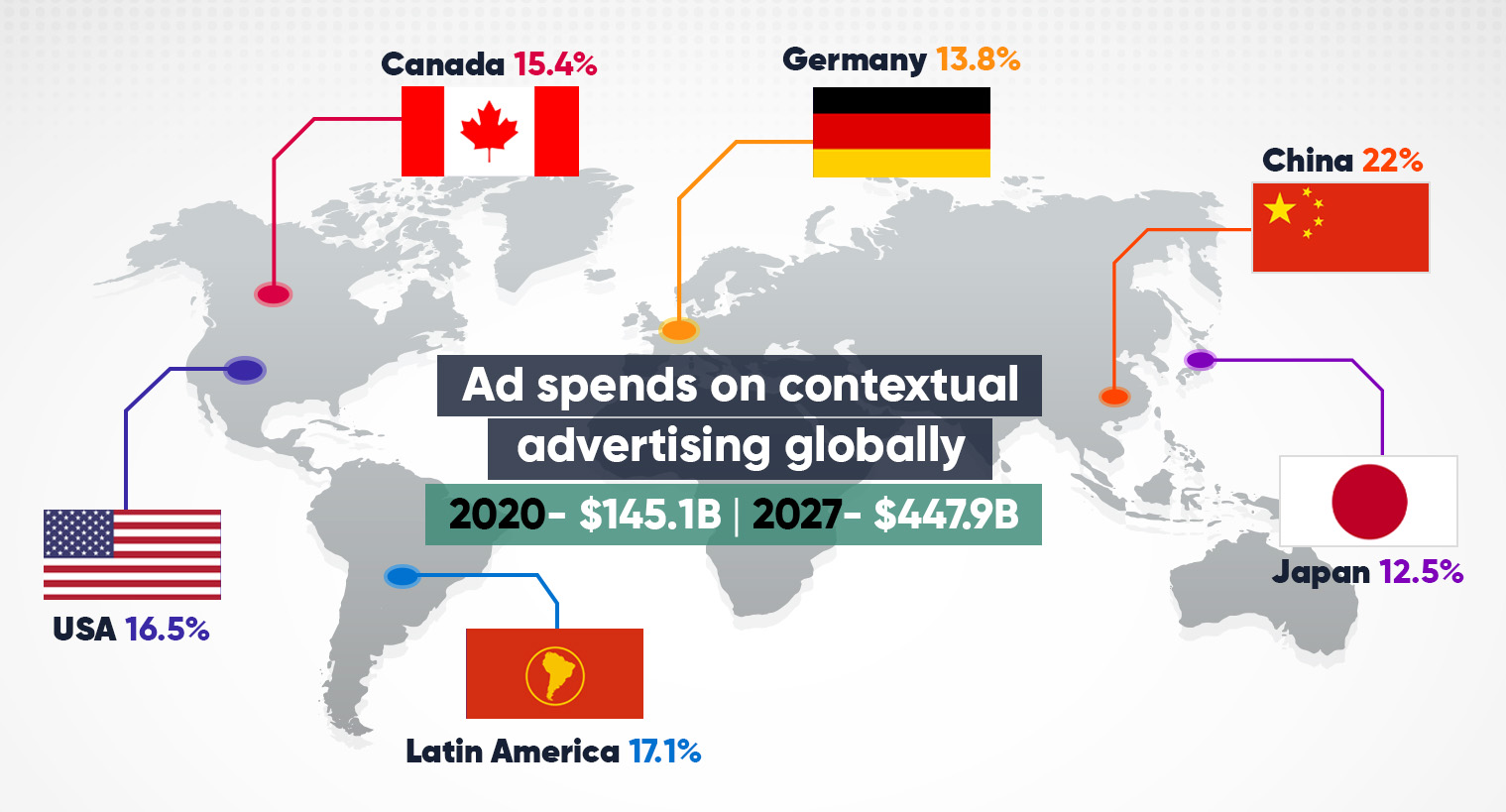
Here is why should choose contextual advertising as the preferred alternative to third-party advertising.
Statistics proving the importance of contextual advertising:
- Context is so powerful that 49% of brand marketers are looking to contextual advertising to replace cookies.
- 79% of consumers are more comfortable seeing Contextual than behavioral ads.
- Between 2020 and 2027, contextual advertising spending is expected to grow 13.3 percent annually.
- 49% of US marketers surveyed are using contextual marketing today.
- In the UK, 32% of marketers use contextual marketing, while 36% use demographic targeting.
Also read: Is Contextual Advertising a Substitute for Cookie-based Targeted Advertising?
Role of Mirrors’ Contextual Solutions in a Cookieless World?
Third-party cookie deprecation certainly marks the end of an era. But the cookieless advertising future will be bright for those advertisers who pivot to contextual targeting to engage with users. Leverage Mirrors by Silvepush’s AI-powered solution to reach your relevant audience at the right time & place without meddling with user’s privacy. We ensure complete brand safety & suitability on YouTube, OpenWeb, and CTV.
To learn more about how Silverpush can help you prepare for the cookie-less world, fill out the form available and we’ll help you advertise in a cookie-free future with our cookie-less advertising solution.
Shifting Industry Priorities in 2023
PUBLISH DATE: 09 January 2023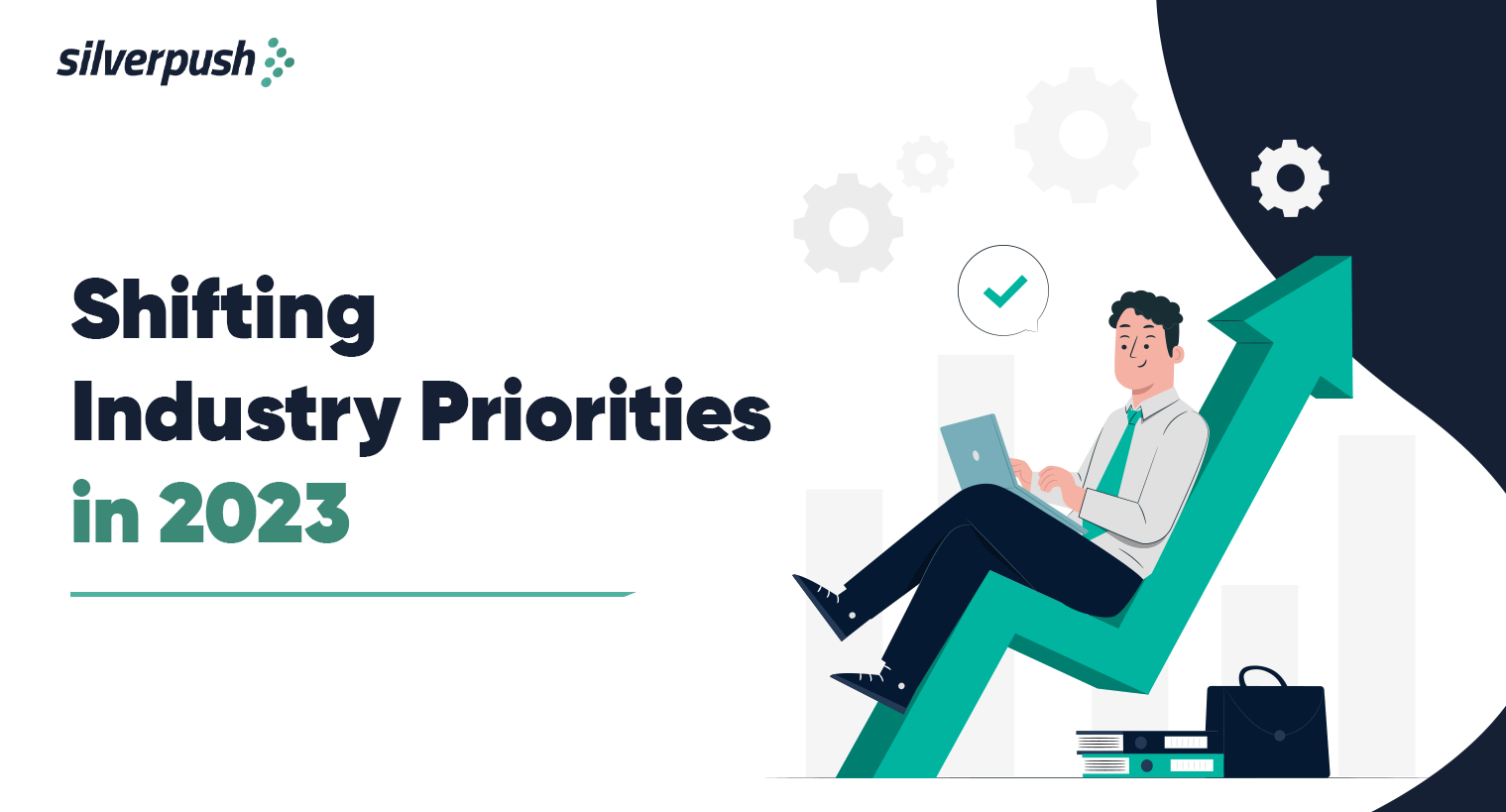
This past year has brought a roller coaster of ad spending. To prepare for 2023, industry professionals must be curating media strategies in anticipation of increasing macroeconomic headwinds. Innovation is definitely a big player in 2023, with advertisers eager to lead disruption in new forms of audience engagement, like 3D ads, while also expanding their efforts in established formats, like CTV.
As 2022 winds down and the industry reflects on last year, let’s take a look into the trends and technology that will shape the next year in the Adtech industry.
Where Industry Experts are Spending in 2023?
Some of the top media priorities where experts are planning to expand their horizon in 2023 are –
- Digital audio – 54% of media experts are anticipating an accelerated shift from terrestrial radio to digital music and podcasts.
- Digital video – At least half of the media experts have planned to prioritize this format for their next campaigns. This may be due to the case of increase in consumption of CTV and growing options for ad-supported video streaming services.
- Social media – Social media platforms will continue to be on the priority list for many media experts – allowing them to take advantage of high rates of consumer usage, ad engagement, and rapid increase of influencer marketing.
- Mobile – Another environment on the key priority list is Mobile. Considering a safe environment, mobile ad spend in the United States is expected to rise 14% year-over-year to surpass $194 billion in 2023.
What are the Major Challenges for Media Experts in 2023?
The deprecation of third-party cookies will happen by early 2024 and has become one of the top challenges for ad buyers and ad tech in 2023. Many consumers are opting out of in-app data tracking, and privacy legislation.
This further comes along with another top challenge which is ad placement. This may include deploying ads either adjacent to risky content or misinformation and fake news.
Thus, these concerns about decreasing data access and ad context highlight an urgent need for solutions that allow advertisers to target audiences based on the content they are consuming (i.e contextual targeting), maximizing audience reach in a brand-safe & suitable environment.
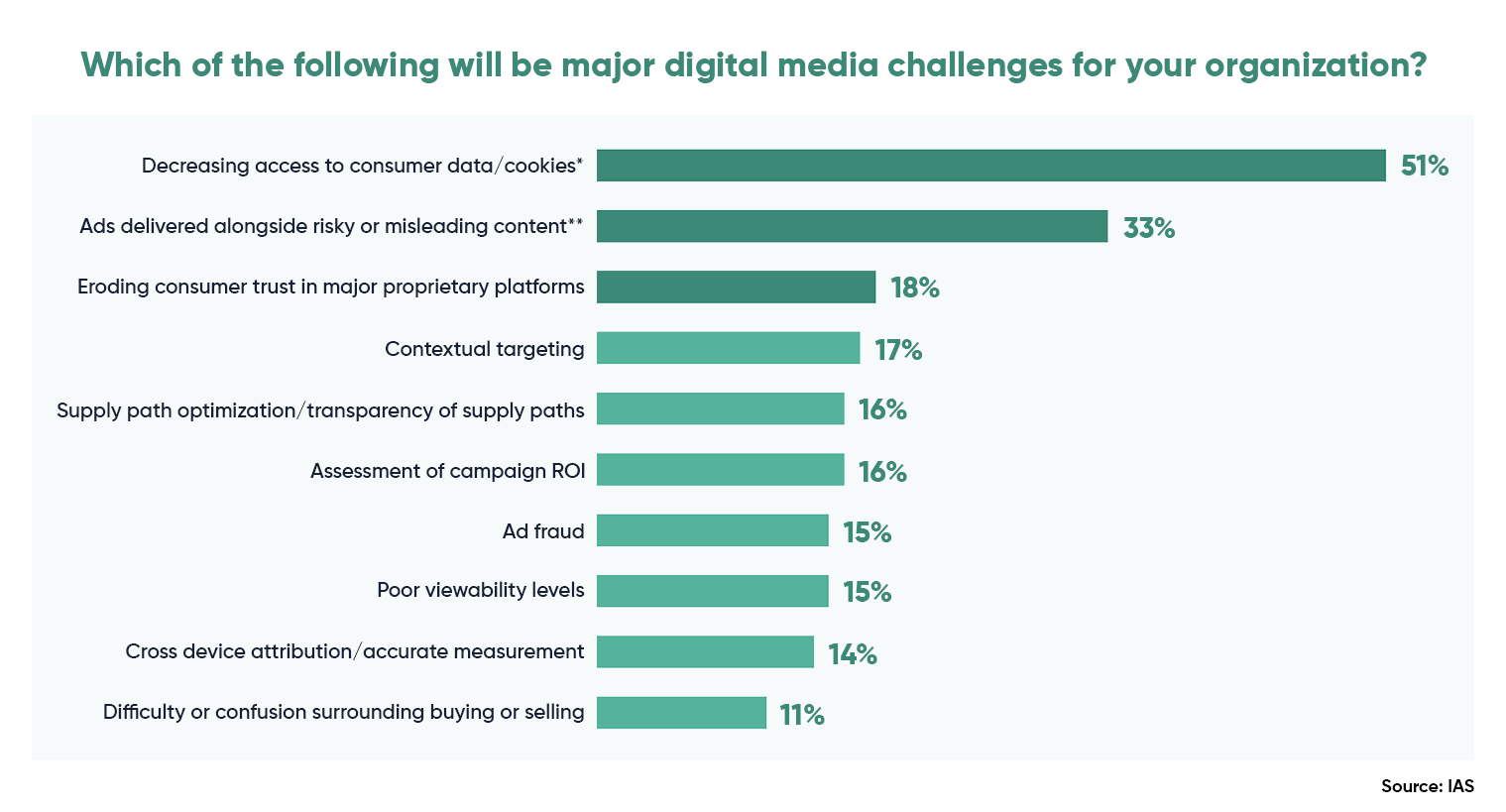
As far as publishers are concerned, the sell-side is also expected to face media challenges, with decreasing access to consumer data/ cookies, choosing monetization with/ without social media platforms, etc.
Some common challenges that publishers are also likely to face are definitely less access to consumer data, identity system integration, maximizing yield, and monetizing first-party data.
Ads displayed next to irrelevant or unsafe content are also another challenge for publishers.
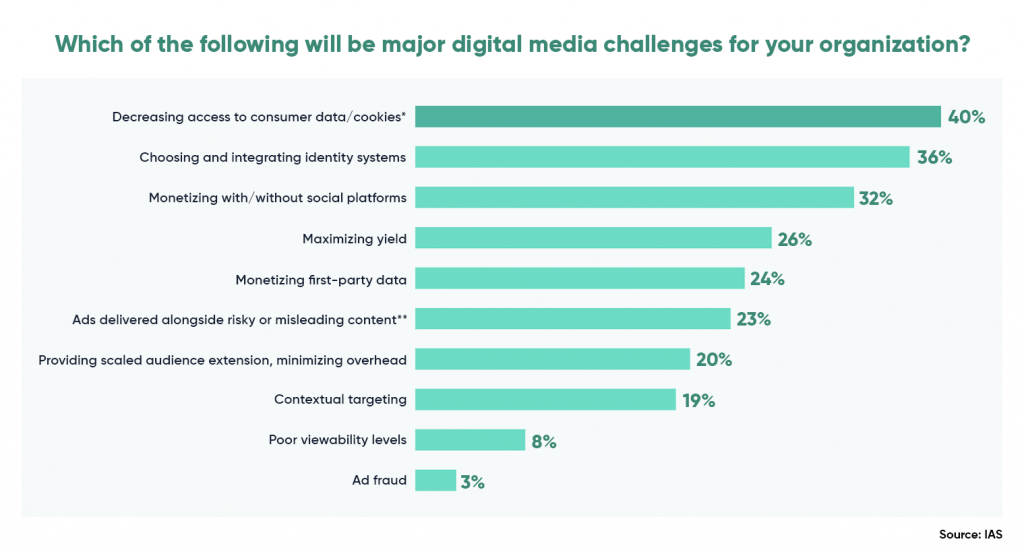
Which Media Type is Likely to Face More Challenges?
Experts have predicted that social media is most likely to face serious challenges in the coming year. Metaverse, as an emerging environment, shall also face challenges as media experts and even consumers have just begun to tap into it.
CTV, though has been on a successful rise, however, many media experts still shy away from spending their ad budget on CTV advertising. With growing demand, perceptions of challenges for this media type will see a rise too.
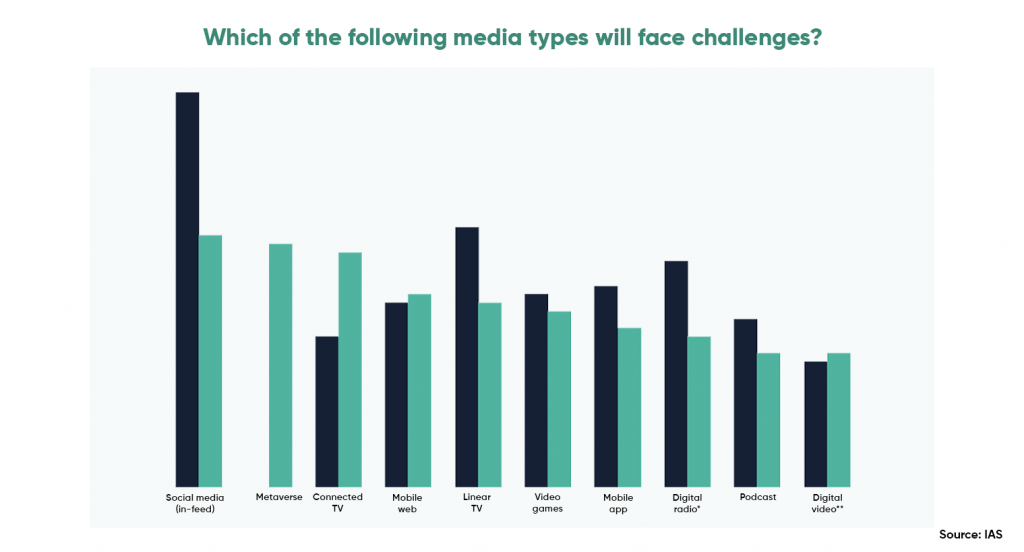
Digital Audio Builds Momentum in 2023

Digital audio—and digital audio advertising—is having a moment. More and more people are listening than ever before, and advertisers are rushing to join in on the fun. Media experts also agree that audio listeners will continue to migrate to digital formats. it is expected that digital audio ad spending is likely to grow 11% to surpass $7 billion next year.
With growing inventory and innovations in audio, industry experts also foresee risks a majority of experts are concerned about ad fraud, and more than half are about brand risk.
Due to these challenges in digital audio, experts see the value of third-party verification to ensure media quality.
The Future is CTV: Expanded Opportunities and Challenges

With most TV audiences streaming across several devices, it is crucial for brands and advertisers to invest in connected TV (CTV) & over-the-top (OTT) advertising as it will help them to reach viewers with premium inventory in a brand-safe environment.
One of the top concerns for CTV in the coming year is ad fraud, which is likely to be seen more of as ad inventory grows. Tracking CTV ad performance is also another issue. Since view-through rates (VTRs) are always high due to non-skippable inventory and click-through rates (CTRs) are irrelevant in this case as it’s not an option when streaming on TV or device, thus neither of these metrics are good performance indicators (KPIs) to measure the success of your ad.
To better track CTV ad performance – using pixels that are placed on the client’s website allows for internet protocol (IP) matching, and Cross-device targeting can be used.
Social Media to Remain Key Advertising Platform
Some things don’t change and that’s what happens with social media platforms as it remains to be key advertising platform, as per many media experts. Despite well-documented challenges with privacy, ownership, and its effect on public disclosure, the platform is hard to ignore with its unimaginable reach and engagement, especially when it comes to targeting Gen Z.
Looking forward, social media ad spend is expected to show a sustainable 9% year-over-year growth for the U.S. in 2023.
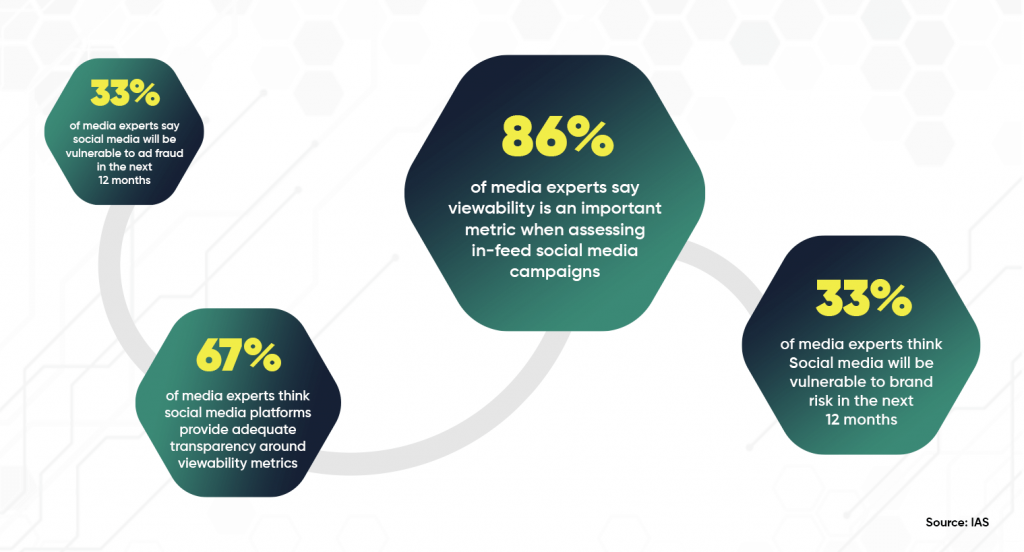
Mobile Consumption gives Rife Opportunities
Between consumers spending more time on their mobile devices watching videos and expanding 5G technology, 2023 is a year of innovation in the mobile space. In order to maintain high-quality media inventory, third-party verification will be an important factor, especially to protect brands against growing ad fraud.
Prioritizing Contextual Targeting in 2023
Contextual targeting has been in the game for a long time, however, with the deprecation of third-party cookies, many advertisers have started to shift their focus from audience/ behavioral targeting to contextual targeting. It’s a win-win for advertisers as they can reach their desired audiences at scale, without worrying about the cookies.
Why Political Advertisers Need a CTV Strategy Ahead of the 2024 Election Cycle
PUBLISH DATE: 22 November 2022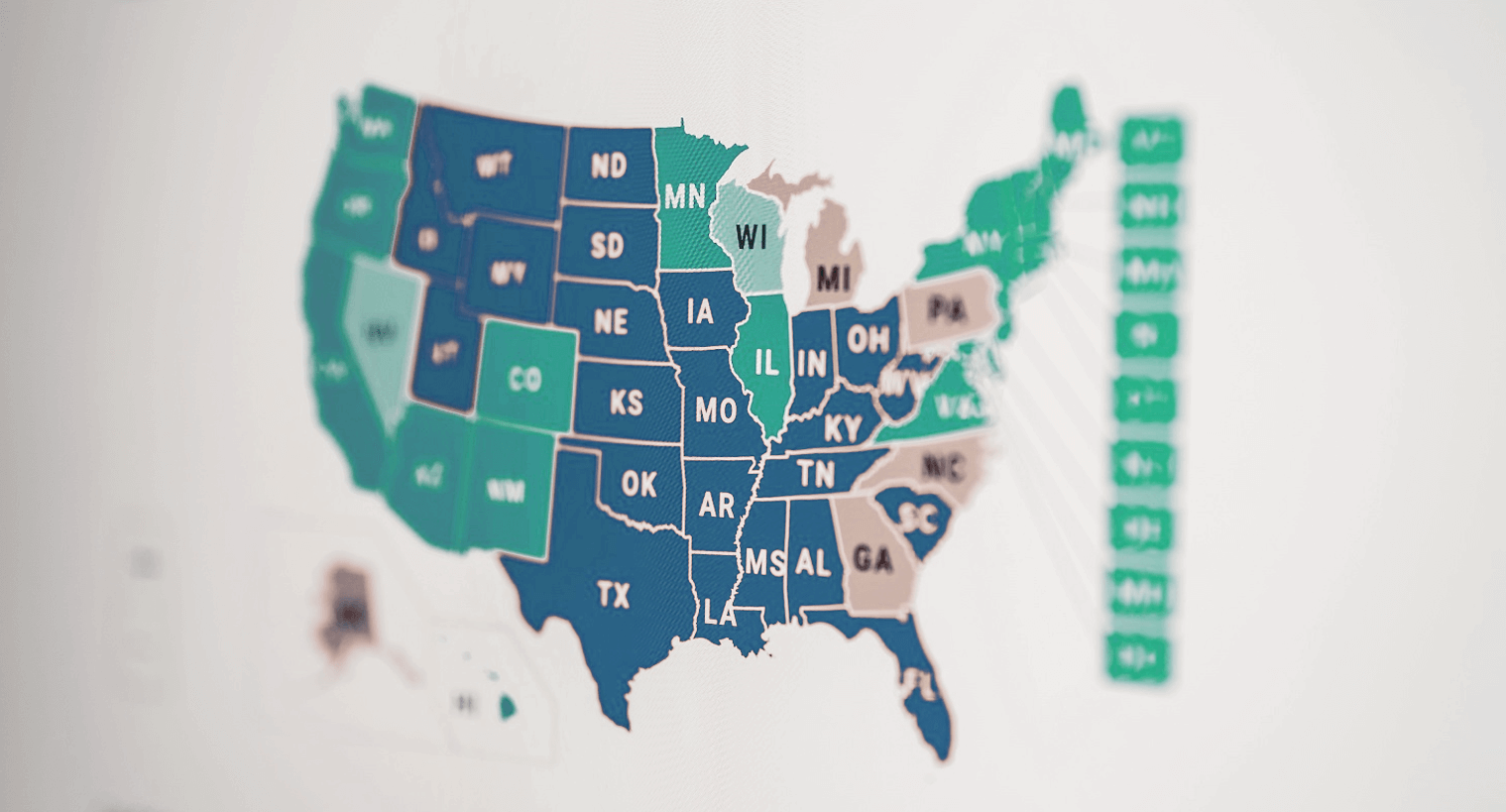
Voters are soon going to line-up to the polls for the 2022 midterm elections, and marketers have this huge opportunity for ramping up their political advertising campaigns. Kantar predicts that Political ad spending for 2022 midterms will reach $7.8 billion. Though, it is no question that broadcast TV will lead the pack, but advertising across digital channels will continue to show significant growth.
This year is the growth in connected TV (CTV) advertising, which is expected to reach $1.2 billion.
Many political marketers began experimenting with CTV ahead of the 2020 elections, but due to pandemic, there has been behavior shift, due to which streaming viewership has grown faster than anyone expected since then.
As of now, there are 85.7 million streaming households in the US, creating a prime opportunity for political marketers to engage voters in every corner of the country.
It’s just a matter of time until the 2024 election campaign will begin to heat up, media strategies for national races are starting to take shape. Political marketers need to build a well-researched strategy and leverage the advantage of CTV and programmatic advertising.
CTV is a crucial part of Political ad campaign
As CTV viewership has increased, it gives political advertisers the advantage of reaching viewers on the streaming platforms where they prefer to consumer their news. The increased reach combined with highly engaging, lean-back CTV viewing experience has been able to draw more attention – and ad spend from marketers.
Optimize engagement in real-time
If marketers want to stay one step ahead of the rapidly shifting narratives of opponents, then media is crucial. CTV and programmatic enable a swift turnaround to deploy new campaign messages into the market, measure impact and optimize engagement in real time.
The superior and precise targeting capabilities of CTV allow political marketers to reach specific segment of voters on the basis of geography, household demographics, and behavior. Though the fragment CTV landscape is a real challenge, however, marketers can reach their targeted audiences in individual market without giving up or sacrificing scale.
In addition to this, leveraging programmatic for political advertising enables marketers to supply across a wider array of media owners and distribution points. They can easily deliver message to the right audience in an effective and scalable way.
Combine complementary datasets with your ad campaigns
The first-party data that is gathered through donations, surveys, or through other meaningful interactions with voters can become a powerful resource when combined with third-party data. By emerging multiple data panels, political marketers can do precise granular targeting on CTV and programmatic. Data specific to geography and device can help advertisers to identify the news inventory that is available within a voting district, whereas, other key attributes like age, gender, social engagement can help advertisers to create a personalized creative to voter’s interests. Such layered data strategy is vital to determine where, when and how to reach voters, and discovering what kind of messages can motivate them.
The advertising capabilities of CTV and its viewership have grown immensely since the last election cycle, providing an unmissable opportunity to reach prospective voters. With key midterm races happening across America, now is the time to test, learn, and prepare for the 2024 presidential election.
79% of UK Consumers Prefer Viewing Contextually Relevant Ads
PUBLISH DATE: 12 October 2022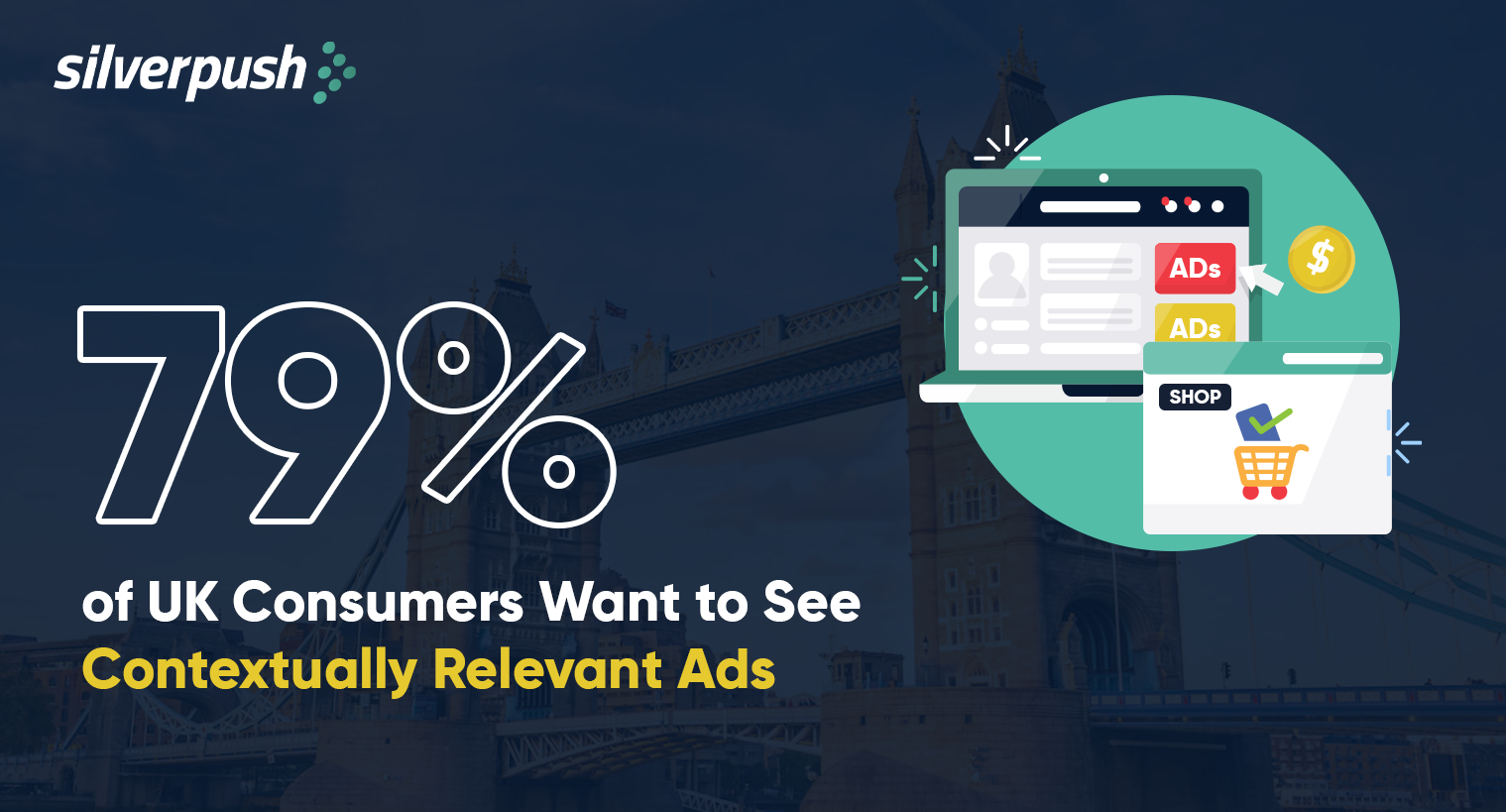
While contextual advertising may be a relatively recent term, the approach is nothing new. As long as there’s been advertising, some form of contextual ad placement has always existed.
Tracking cookies and data profiling have been the preferred method for many advertisers in the UK for the past several years.
However, these methods target a consumer based on who they are or what they have done. This can lead to irrelevant ad placement and ad wastage. Contextual advertising, on the other hand, targets the site or page and reaches the people only when they are reading or viewing that content.
Most importantly, privacy policies like the EU’s GDPR (Global Data Protection Regulation) and CCPA are also in full swing. These significant pieces of legislation have come into action to make tracking internet users via third-party cookies more difficult and eventually bring an end to audience-based targeting.
Brands are more than willing to give up tracking users’ behavior and focus more on the placement of ads in the digital environment and content they are viewing.
According to data, around 81% of UK consumers prefer viewing online ads that reflect the content they are viewing. And, 72% of consumers find contextual relevance important.
Must Know Facts about the UK Advertising Market
1. Purchasing Power of UK Consumers
The United Kingdom is a country with a high GDP per capita (about $40,000), which allows companies to sell goods and services with large margins. This portrays a higher purchasing power of the people there and an increased chance of getting clicks getting converted into conversions.
2. Video Advertising in the UK
Almost £5.5 billion is spent in the UK on video advertising, making this platform a golden opportunity for brands to display their ads.
3. Usage of YouTube in the UK
Advertising on YouTube in the UK has the potential to drive massive audiences. The UK is among the top 3rd country in the world that receives maximum views and subscribers through YouTube alone.
Not forgetting to mention the status of YouTube premium in the UK, 97% of Britishers access YouTube and only 1% of them have subscribed to YT Premium. This makes it clear that most of the UK audiences are still watching ads on YouTube.
This opens up a whole world of opportunities for brands who prefer to place their ads on YT videos and reach the audiences when they are most likely to engage.
More than 75% of individuals of every income bracket watch YouTube, with the likelihood of watching increasing with the pay grade.
Whether marketers want to advertise essential items or luxury products, YT proves to be a wonderful platform for it. There are almost no people in the UK who do not use YouTube at least monthly.
According to a survey conducted in the third quarter of 2020, 46 percent of respondents went on YouTube on a daily basis.
How Does Advertising Work on YouTube?
Users can watch an ad on YouTube before/during the video, in the search results, in the bottom line of the video, or when it appears as a pop-up.
YouTube provides settings like demographics, preferences, the topic of the ad, related keywords, or certain pages for placement of ads by the brands.
The targeting strategy YouTube follows includes audience targeting, category, keyword, etc. But, the problem with all these methods is that it considers the content but not the context while inserting ads in videos.
The 3 Main YT targeting Strategies are:
- Audience Targeting –
Affinity/Audience Targeting raises brand awareness and drives consideration with your video ads by reaching people who already have a strong interest in relevant topics.
But, through this targeting method, ads are deployed based on past searches and keyword mapping which is the main cause of random ad placement.
It also relies on user data for placing ads, which is a huge concern after the ban on 3rd party cookies.
2. Category-Based Targeting-
Brands can reach a broad range of videos, channels, and websites related to the selected topics with category targeting.
But, each of these categories contains many targetable subcategories that cannot be excluded as per need.
3. Keyword Targeting
Here, depending on the video ad format, brands can display ads based on words or phrases (keywords) related to a YouTube video, YouTube channel, or type of website that their audience is interested in.
Statistics Related to Contextual Advertising on YouTube in the UK
1. In the UK, 32% of marketers use contextual marketing, while 36% use demographic targeting.
2. 56% of U.K. consumers said that how a company uses personal data has a direct impact on purchasing decisions, according to Forrester.
3. The majority of UK consumers (81%) prefer online ads to match the content they are viewing. Additionally, 72% of consumers say that contextual relevance is important.
4. Ads are more likely to be remembered if they appear next to content that is relevant according to nearly three-quarters (70%) of UK consumers.
5. The consumer perception of an online ad, and the brand associated, are impacted by its surrounding content, with seven in every ten British consumers (70%) agreeing.
6. If brands serve contextually relevant ads then roughly two-thirds (65%) of British consumers will have a more favorable opinion of those brands.
Spreading Contextual Relevance on YouTube with Mirrors in the UK
Mirrors by Silverpush is an AI-powered contextual advertising platform that enhances YouTube ads with the world’s first in-video key context identification technology.
YouTube’s advertisement strategies have failed to pay off for advertisers because of neglecting the context of the video. This has resulted in – Poor ad experience, Significant ad waste, and Increasing costs.
Reaching people during moments of intention can be incredibly powerful. Mirrors advanced contextual advertising capabilities help brands deliver ads that are relevant to what people care about at that very moment and widen their audience reach.
Features of Mirrors for YouTube:-
- Hyper contextual targeting is the next generation of YT advertising. Mirrors use AI/ML for in-video context (celebrities, brands, places, objects, etc.) for precise targeting.
- Ads are served only after multiple pre-defined visual/audio triggers are uncovered.
- Ensures only content-aligned, high-performing, and brand-suitable videos pass-through for final ad placement.
Early Holiday Shopping Trends for 2022 Festive Season
PUBLISH DATE: 09 September 2022
It’s a timeless truth. Brands face some fierce competition in every holiday season to drive consumer attention and increase their sales. To make your brand stand apart during holiday shopping and the mega sales days, they need to invest in the right combination of planning, strategy, personalization and technology.
During and after Covid, our lives have changed a lot. One that seen shifts in how we work, how we connect, or how we shop. And every changes comes with its challenges. While technology is emerging that seeks to support businesses in the face of transformation.
Though so much is changing around us, but there are some habits which are constant. Humans need and holiday shopping habit are still the same. Modern technology has adapted to deliver on timeless human needs in new ways.
Companies have managed to meet these expectation during key shopping moments through the advanced technology methods.
Four Phases to Make your Business’s Best 2022 Holiday Season Year
To help your brand navigate the 2022 holiday shopping season, here are the early retail trends and consumer behaviors you need to take a look at:
- Establish a solid campaign foundation: Build up a strong data, creative, media and measurement growth well ahead of your sales event.
- Reach customers early: Take advantage of cost-efficient impressions early to reach shoppers early this holiday season. Be on the top of mind with shoppers.
- Maximize purchases: Build a momentum for your brand and maximize purchases when purchasing is at its peak.
- Be on their mind: Stay on top of mind and drive loyalty with your newly acquired customers.
Holiday Shopping Starts Much Earlier
With the rise of ecommerce, the number of online shoppers worldwide is also increasing with it. In 2021, the number of digital buyers is at 2.14 billion. This means that 27.6 percent of 7.74 billion people in the world were shopping online.
More than one out of every four people does online shopping.
Moving money via the internet is no longer reserved for traders and investors. Anyone and everyone who has access to it is now able to send money online.
People are exploring and cataloging ideas for their holiday shopping much earlier than you are expecting. It is surprising to know that not weeks, but months before the craze for holiday season begins. This revelation is essential for every business – understand if people are planning their shopping earlier, you need to plan your marketing much earlier to keep up with the pace of your customers. Don’t wait for the season to just begin or your promotions will be left in the dust.
Reach Your Most Enthusiastic Customers
Connect with the household CEOs – a broader audience that purchases and spends the most. Get in touch with them first and you have higher chance to be their first choice for shopping.
Who Spends the Most Online?
| Rank | Country | Ecommerce Spend Per Capita |
|---|---|---|
| 1 | United Kingdom | $4,201 |
| 2 | United States | $3,428 |
| 3 | South Korea | $2,591 |
| 4 | France | $1,946 |
| 5 | China | $1,855 |
| 6 | Australia | $1,764 |
| 7 | Canada | $1,746 |
| 8 | Japan | $1,488 |
| 9 | Israel | $1,361 |
| 10 | Germany | $1,283 |
When you connect with the early planners, you connect with the household CEOs – a larger audience that purchases and spends more. Get in touch with them first and you have the chance to be their first choice for shopping.
Who is Spending the Most?
Younger shoppers are more likely to increase their shopping budget than their older counterparts, but will spend the lowest proportion (63%) online.
Even though marketers and businesses have prioritized these planner-type shoppers, however they often make assumptions about the timings of their promotions.
Realize that customers will not wait around – in fact, they have started earlier than ever. 46% of consumers surveyed by the National Retail Federation already started their shopping earlier than ever. In the early November survey, 61% consumers said that they already started shopping for the holiday. Shockingly, more than one-quarter completes their total holiday shopping by early November.
What Changed the Consumers Behavior?
Some may start their shopping earlier in the year to help budget their purchases instead of spending a big sum all at once. This is a continuing trend since the 2021 holiday season, when consumers start their holiday shopping earlier than ever due to growing supply chain and issues during shopping. The shopping concerns are compounding due to growing interest rates and overall inflation.
There are other emotional reasons too as to why shoppers are starting earlier than anticipated. People nowadays crave the comfort of the holidays after a tough year. What was once more like a chore, now feels special – meeting family members, having good food, the excitement of opening and exchanging gifts – all these have taken a new meaning. Consumers now look forward to holiday season more than ever, and that’s what motivates them to buy earlier.
Silverpush’s AI Technology Capabilities puts You Where Your Audience Is
Finally a platform that understands how content is consumed today and how advertisers can reach them. A platform that understands as people move across screens, advertisers need to adapt instantly.
Introducing Silverpush!
World’s leading digital marketing solution provider. Silverpush’s advanced AI technology makes it easy to find your audience—no matter where they are, no matter what they’re watching. The company is built on three fundamental pillars – contextual advertising across different platforms, brand safety, and value of consumers privacy.
Introducing Mirrors – Future of Digital Advertising
BRANDS MATTER.
BRANDS MATTER TO YOUR CONSUMERS.
Keep this in mind when moving forward with your holiday marketing.
Traditional advertising campaigns on YouTube and Social Media pose the biggest challenge for the brand:
- Serves ads to anyone it identifies as looking for remotely similar to your brand or product, regardless of whether the ad would be appealing to the audience at the moment they are viewing it leading to ad wastage.
- Brand Safety and suitability issues which result in low VTRs, hence the low consumer engagement with the brand.
Mirrors by Silverpush is a one-stop solutions for these. It is world’s in-video key context identification technology. Our advanced AI technology helps you to grab people’s attention by reaching them at the right moment, without the use of personal data.
Mirrors identifies key contexts through in-video contexts such as celebrities, brands, objects, actions, and places ads in a brand suitable environment where users are most likely to engage. Our deep machine learning technology intelligently identifies unsafe content and avoids placing ad on such.
Give us a call and reach the enthusiastic customers this holiday season.
Parallels – Conquer Competition through TV Sync Technology
Parallels – TV sync technology by Silverpush, conveys your brand message to the TV audience at the right time and garner their attention. Parallels – real time ad tracking technology reach TV distracted audiences in real time. Digital campaigns are triggered after a TV ad of competition brands and self is identified live on TV.
The advanced AI technology syncs social, display and video ads to real-life moments, enabling an enhanced connection with consumers around live events, as they happen.
Brands can also maximize brand exposure through real-time sporting events. Our human augment AI technology solution automatically triggers digital ads based on live moments, runs contextual creatives, and syncs digital ad placement during TV commercials.
Want to know more about our products, we are just a call away!
Why Should You Consider Contextual Targeting Instead of Audience Targeting?
PUBLISH DATE: 06 September 2022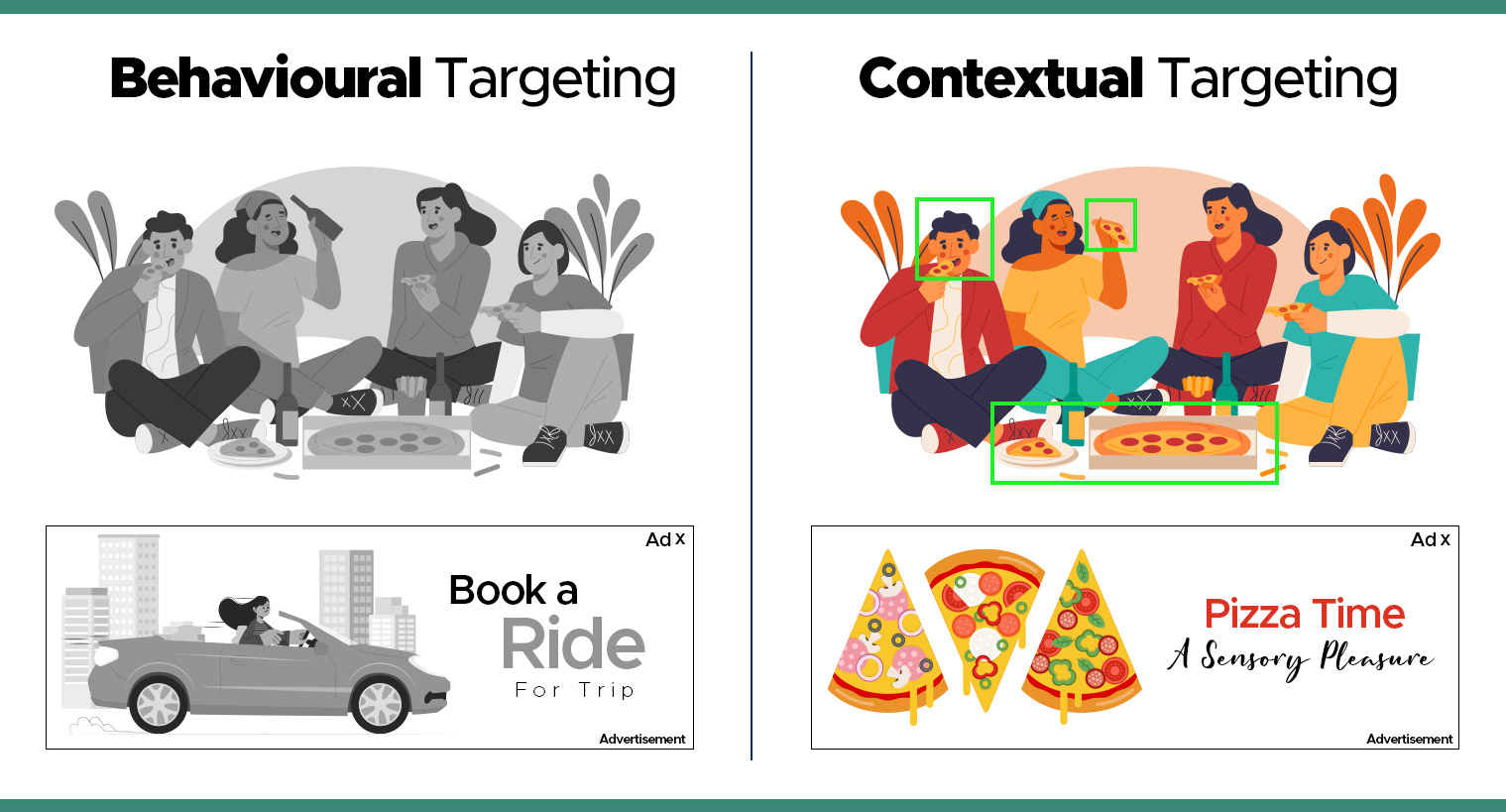
Since third-party cookies are going to fade away soon, audience targeting will face a tough time standing against contextually targeted ads.
Audience targeting has been in the advertising industry for quite some time and has gained enormous traction in the digital marketing space. However, in light of the recent changes done to the third-party cookie, does audience targeting still stand solid?
Audience-based targeting relies on data like individual characteristics, interests, and behaviors to target the viewers seeing a specific ad. This is the major reason which makes it difficult for advertisers to depend on this method in the post-cookie world.
According to statistics, spending on contextual advertising has been predicted to increase to USD 297.68 billion by 2023, from USD 125.79 billion in 2018.
Also, according to an eMarketer survey, about 50% of US marketers and 33.33% of UK marketers currently favor contextual advertising as their preferred targeting format.
The resurgence in popularity of contextual advertising can be seen after several years in 2022 owing to its simplicity and effectiveness while reaching the audience at the right time and place without meddling with their privacy.
For digital advertisers looking to gain the attention of users for their ad campaigns, the most important question is why contextual targeting has an upper hand in the post-cookie era. But, before we dive deeper into this topic, let’s recap the difference between audience and contextual targeting.
Difference between Contextual and Audience Targeting
Which one would you like better?
Viewing an ad for sports shoes while reading an article about Jeff Bezos (because a few days back you were scrolling through the internet searching for gym shoes) or, coming across an ad for sports shoes while reading an article on fitness.
Definitely, the latter!
A survey stated that 66% of consumers admitted they were uncomfortable with businesses and brands tracking their browsing history to show them personalized ads. This is what audience targeting does!
Audience targeting is the method of using data like viewers’ online history, preferences, and actions to segregate consumers or prospects based on demographics, geographical locations, interests, or individual preferences.
Data plays an important role in audience targeting, which is why it relies heavily on the use of third-party cookies to track consumer behavior online.
This has yielded great results for marketers in the past. But as consumers and industry leaders focus more on privacy updates, advertisers need to look to alternative targeting methods.
Contextual targeting proves to be a fantastic and effective alternative to audience targeting. It enables advertisers to use a more privacy-friendly kind of targeting for ad campaigns. It targets potential consumers based on contexts, such as the content of a webpage a user is looking at, location, or the weather in a specific location.
Since it matches the ads with the content of the page to where it is displayed it builds a strong pillar of trust for brands and businesses to connect with their audience.
For example, if a person is reading a movie review, he would see ads related to “purchase movie tickets” or “join up for a movie streaming service.” This is contextual advertising.
Benefits of Contextual Advertising Over Audience Targeting
For some time now, we can witness a sudden shift in the advertising industry from third-party cookies to focusing on the context. Below are a few reasons why contextual advertising is getting an edge over audience targeting.
1. No More Dependency on Third-Party Cookies
A recent study stated that around 72% of Americans are “very to extremely concerned” about their online privacy. Also, about 80% admitted they were more open to seeing ads not requiring their data. Since contextual advertising does not rely on cookies, it is one of the significant reasons why it is gaining popularity among marketers and advertisers.
2. Personalized Content with Improved Customer Experience
79% of consumers are more comfortable seeing Contextual than behavioral ads. Consumers appreciate being presented with more personalized ads than random ads popping out of nowhere. With the use of contextual targeting more relevant ads are shown to the consumers, and these can help the brand improve its ROI.
3. Cost-Effective and Easy to Implement
Unlike conventional advertising strategies, contextual advertising is cost-effective and does not harm advertisers’ pockets. They are only charged for advertisements that are clicked, not for advertisements that are shown on the site.
Last Words
With third-party cookies being phased out, reaching audiences at the correct time and place has become challenging. Silverpush’s flagship product – Mirrors helps in context-relevant video-level ad targeting by identifying key contexts like celebrities, brands, objects, places, actions, on-screen text, and audio for nuanced targeting for more precise targeting.
Content-aligned ad placement, brand safety, and customized brand suitability are all ensured during the process while reaching the potential audience.
Google Topics API – All you Need to Know
PUBLISH DATE: 30 August 2022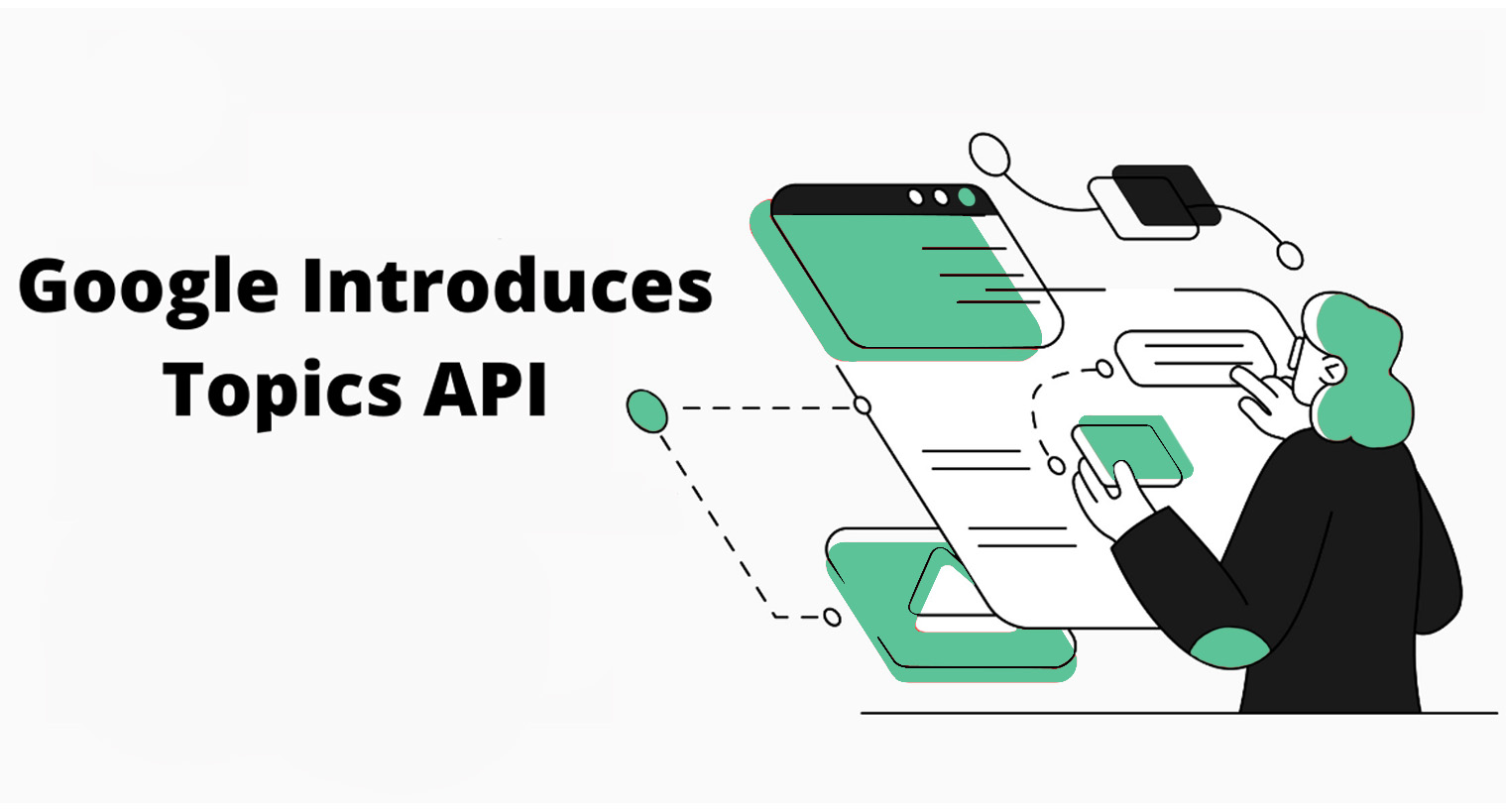
Along with major tech companies like Apple and Mozilla Firefox, many eyes are also focused on Google, one of the world’s biggest digital advertising players about its plan to replace third-party cookies.
Ever since the initial initiative of Google, Federated Learning of Cohorts (FLoC), was turned down because of widespread community feedback, there has been a long silence.
But, on July 1, 2022, Google announced the replacement of FLoC– “Topics”, Chrome’s Privacy Sandbox proposal.
This new API puts the privacy of the user at the forefront and is based on an interest-based model of advertising that will display ads without tracking the site a user visits.
To determine whether this new API is the best way to strike the right balance between privacy and relevant ads, we must first understand what it is, how it works, and what its benefits and drawbacks are. So, let’s get started.
What is Google Topics?
Google Topics is Google’s proposed alternative to third-party cookies in terms of privacy. It is a browser-based system that assigns a set of interests to a user based on the websites they have visited.
Once these interests are assigned, the Topics API distributes them to participating websites and ad tech companies, which can then use them to display personalized digital ads.
Because all tracking occurs on-device, data is only stored for a maximum of three weeks and no information is shared with any external servers (including its own).
The Topics API has three primary functions to accomplish:
- Maps website and hosts topics of interest. For example, a gym website would be categorized under “Fitness”
- Based on a user’s browsing history, identify the most important topics for them.
- Provide a JavaScript API to help with ad selection based on the user’s interests.
Google is presenting the Topics API as a potential middle ground between ad personalization and user privacy that will shape the post-cookie industry’s future.
However, the company is careful to point out in its explanation that the technology is still in its early stages of development.
Also Read: Brand Safety v/s Brand Suitability – How do they differ?
How does Google Topics Work?
Based on a user’s browsing activity, Topics API determines a handful of topics such as “Health & Lifestyle” or “Yoga & Walking” that represent their top interests for the previous week.
When a user visits a participating site, the API will share up to three topics, one from each of the previous three weeks, with participating sites and their advertising partners, who can use it as one of several possible signals for interest-based advertising.
Topics are only kept for three weeks before being deleted.
For example, if you’re promoting gym memberships or sports equipment and want to reach people who are interested in fitness, you can do so in a relevant and private way.
Google currently uses a list of 300 topics to categorize the websites you visit. When you visit a new website, Google will categorize it according to the best fit.
Your browser is the most important factor in determining what you see when using Google Topics. As you browse the web, your browser will learn about your interests and collect information about the websites you visit.
Google will then deliver your interests to relevant advertisers based on all of the user behavior data.
Can Google Topics Solve the Privacy Issue?
Coming back to the main topic, the reason why everything started in the first place is user privacy. Has Google Topics been successful in solving the privacy issue of users?
Lowers the Chances of Fingerprinting
Launching a limited set of topics (350 in the original proposal, now 300) reduces the possibility of individuals being identified based on their unique topics of interest.
Furthermore, the same user may have different topics assigned to them across different sites, adding a small amount of noise and making it more difficult to reveal their identity.
Provides More Transparency
Previous feedback prompted us to look into new ways to make interest-based advertising in the Privacy Sandbox more transparent and meaningful to users.
Users of Chrome will be able to clearly identify the topics with which they are associated, such as “Pop Music” or “Tourist destinations.”
Continues to Avoid Sensitive Categories
To avoid accidentally introducing sensitive topics, the list of possible topics will be made public and manually curated. This list will be created and maintained in collaboration with the internet ecosystem, and it will be made available to the public so that users and the community can provide feedback.
Some other privacy issues solved by Google:
- The topics displayed to advertisers are completely under the control of the user.
- The topics can be removed from the browser or disabled.
- The site does not need to know who you are in order to show you an advertisement about any topic.
- The specific sites you’ve visited are no longer shared across the internet, as was the case with third-party cookies.
Google Topics – Pros and Cons
Let’s all take a deep breath and consider all the pros & cons for Google Topics.
Pros:-
- Topics are carefully chosen to avoid sensitive categories such as gender or race.
- Since it is powered by the browser, Topics gives you a more recognizable way to see and control how your data is shared.
- By providing websites with your topics of interest, online businesses can continue to serve relevant ads without using covert tracking techniques such as browser fingerprinting.
- Topics will be selected locally on people’s devices in the current version of this proposal, without the involvement of any external servers.
- Topics will only be stored for three weeks before being deleted in order to limit the amount of data associated with an individual at any given time
- Topics will only be stored for three weeks before being deleted in order to limit the amount of data associated with an individual at any given time.
- Chrome will provide user controls from the start, allowing users to see the topics generated based on their browsing history, remove them, or completely opt out of the Privacy Sandbox APIs.
Cons:-
- Topics are chosen based on popular sites visited by users, with each publisher site only representing up to three categories. This makes it difficult for large organizations covering a wide range of topics such as politics, business, sports, and so on to accurately represent the inventory and reader interests of such publishers.
- Topics do not account for consumers’ interests outside of Chrome, so there is no consideration for what the user engages with on connected TV or Safari, for example.
- Without an understanding of the topics people read on their iPhones, marketers have a very incomplete view of consumers’ interests, which makes it tough to reach them with relevant advertising to drive sales.
- Topics also only identify domain-level interests, which creates another limitation for fully understanding what is relevant to the consumer and advertising products or services they are likely to buy.
- Google Topics will only identify topics of interest based on user Chrome activity.
Google Topics Walking Hand in Hand with Contextual Advertising
Does this new privacy-preserving feature that targets an audience based on the context of the page remind you of something similar? Yes, it is our old-fashioned contextual advertising.
For example, if a yoga studio wanted to target people who read workout articles, it could simply place ads on sites like fitness magazines. Because of the context, the advertiser would know people who visit these sites are interested in Yoga and fitness. In short, this is what Topics does for you.
“Interest-based Advertising (IBA) can help advertisers reach potential customers and help fund websites that cannot otherwise easily monetize visits to their site purely through contextual advertising,” according to the most recent Google Topics developer documentation. IBA can also supplement contextual information for the current page to assist the visitor in finding a suitable advertisement.”
Moreover, it is also important for advertisers to understand that Google Topics API is not a stand-alone tool or a substitute for cookies, it needs to
Be paired with first-party data or a contextual signal strategy to supplement Topics API.















